Paul van Yperen's Blog, page 280
February 23, 2018
Pauline Brunius
In the first decades of the 20th century, Pauline Brunius (1881-1954) was the Queen of the Swedish stage. For a number of years, she also focused on film acting and directing. Later she became the first female managing director of Dramaten, the Royal Dramatic Theatre in Stockholm.
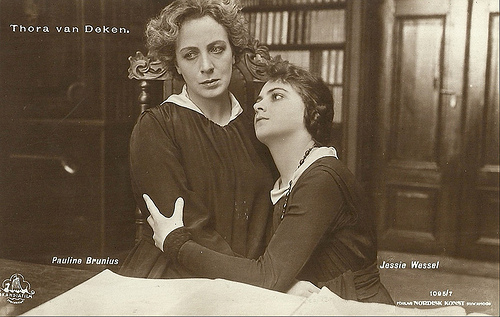
Swedish postcard by Verlag Nordisk Konst, Stockholm, no. 1095/7. Photo: Skandia Film. Pauline Brunius and Jessie Wessel in Thora van Deken (John W. Brunius, 1920).
Extremely successful in queen roles
Pauline Brunius was born Emma Maria Pauline Lindstedt in 1881 in Stockholm, the capital of Sweden. She started as a ballet girl at the Opera in 1891 where she spent ten years. From 1899 till 1902, she had private acting lessons by actress Lotten Dorsch. In 1902, she made her debut as an actress at the Olympiateatern.
During the early 20th century, Pauline Brunius acted in Stockholm's major theatres, the Svenska teatern, Vasateatern and Dramaten. She was considered 'The Queen of Swedish Theatre'. At Svensk filmdatabas , Mikaela Lindblom described her in 2012 as "a classically-educated actress with a magnificent posture, had a melodic voice and was extremely successful in queen roles."
From 1926 till 1932, she was the managing director of the Oscarsteatern together with her husband, actor and film director John W. Brunius and with star actor Gösta Ekman . They changed the operetta theatre into a respected and innovative scene for stage plays.
Pauline Brunius acted in only 13 film roles. Her cinema career started with Thora van Deken/A Mother's Fight (John W. Brunius, 1920), also with Gösta Ekman . The film was based on a short story by Henrik Pontoppidan about a divorced wife of a wealthy landowner who lies in court that her deceased ex-husband had destroyed his will to secure her daughter's inheritance. In 1914, Brunius had already performed this role on stage and the film focuses on her standout performance.
Brunius would be paired again with Gösta Ekman in Gyurkovicsarna/Lieutenant Tophat (1920) - also with Nils Asther , Kärlekens ögon/A Scarlet Angel (1922), Karl XII/Charles XII (1925), and Gustaf Wasa del I/Gustaf Wasa, Part One (1928), always directed by her husband, John W. Brunius.
The silent historical film Karl XII/Charles XII (John W. Brunius, 1925) was released in two separate parts because of its long running time of nearly six hours. The film depicts the life of Charles XII of Sweden (1682-1718) who oversaw the expansion of the Swedish Empire until its defeat at the Battle of Poltava. It was the most expensive production in Swedish history when it was made, and inspired a string of large-budget Swedish historical films.
Pauline Brunius also acted opposite Renée Björling in En vildfågel/Give Me My Son (John W. Brunius, 1921), and opposite Einar Hanson in Gunnar Hedes saga/Snowbound (Mauritz Stiller, 1923).
In 1930, she appeared in the sound film Charlotte Löwensköld (Gustaf Molander, 1930) featuring Birgit Sergelius. It is an adaptation of the 1925 novel Charlotte Löwensköld by Selma Lagerlöf. The film is almost entirely silent, with only brief dialogue sequences and a few sound effects. The film was not considered a success, and no further adaptations of Lagerlöf's work were made in her lifetime.
Brunius co-starred with Victor Sjöström in his sound film Markurells i Wadköping/Father and Son (Victor Sjöström, 1931). However, Pauline Brunius is today best remembered in Sweden for her role as the high-class Mrs. Lindberg in the social comedy Karl Fredrik regerar/Karl Fredrik Reigns (Gustaf Edgren, 1934) with Sigurd Wallén.
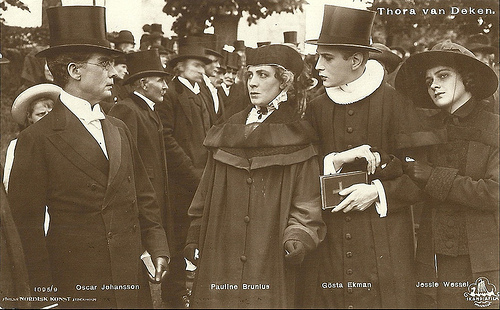
Swedish postcard by Verlag Nordisk Konst, Stockholm, no. 1095/9. Photo: Skandia Film. Pauline Brunius, Gösta Ekman , Jessie Wessel and Oscar Johansson in Thora van Deken (John W. Brunius, 1920).
Ten stormy years of stage direction
In the 1920s, Pauline Brunius made a series of short comedies based on her own scripts about the charming Stockholm family Vinner. The series started with Trollsländan/The dragonfly (Pauline Brunius, 1920). The parents were played by the true couple Frida and Olof Winnerstrand and the son Putte by Brunius' son Palle.
Six episodes were made that were shown as short films at the cinema and remind of our current situation and action comedies. Fragments are preserved from De läckra skaldjuren/The Delicious Shellfish (Pauline Brunius, 1920) and Herr Vinners stenåldersdröm/Mr. Winner's Stone Age Dream (Pauline Brunius, 1924), plus a complete version of Lev livet leende/Laugh Live Smile (Pauline Brunius, 1921).
In co-operation with her husband, Pauline Brunius directed her only feature, Falska Greta/The False Greta (John W. Brunius, Pauline Brunius, 1934). The film was inspired by the obsession about Greta Garbo 's Swedish visit in 1928. The script is kept at the Swedish Film Institute's library. Svenska Film's production manager Vilhelm Bryde approved of making the film with the addition of "an entertaining summer anniversary".
In the end the script was filmed without Svenska's participation in Finland as a Swedish-Finnish co-production. The film, with Karin Albihn playing the title role, is today considered lost. Brunius henceforth dedicated herself exclusively to theatre.
In 1938, Pauline Brunius was the first woman, who was appointed managing director of Dramaten, the Royal Dramatic Theatre in Stockholm, since the opening in 1788. She succeeded Olof Molander, who had ruled Dramaten with iron hand.
Brunius had ten stormy years at Dramaten. Leading Sweden's national theatre through the years of the Second World War can't have been easy. She was criticised for a performance by Dramaten in Berlin in 1941. Under Brunius' leadership, Marika Stiernstedt's anti-Nazi play Attentat (The Attack) was staged by Alf Sjöberg in 1944. She was praised for her consciously strong initiative at Dramaten and for her initiative to build a second stage, the Little Stage, to increase the competitiveness and capacity of the national theatre. In 1948, she resigned due to illness.
In 1954, Pauline Brunius died in Stockholm at the age of 73. She had been married to John W. Brunius from 1909 till 1935. Their children were actress Anne-Marie Brunius and actor Palle Brunius. Director Nils Brunius is Pauline Brunius's grandson.
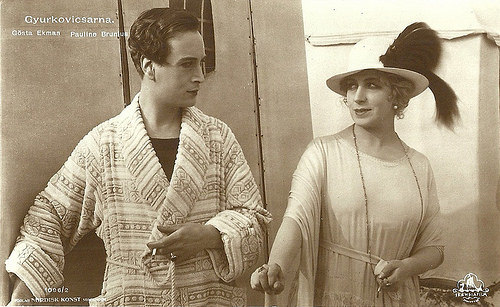
Swedish postcard by Forlag Nordisk Konst, Stockholm, no. 1096/2. Photo: Skandia Film. Gösta Ekman and Pauline Brunius in Gyurkovicsarna/Lieutenant Tophat (John W. Brunius, 1920).
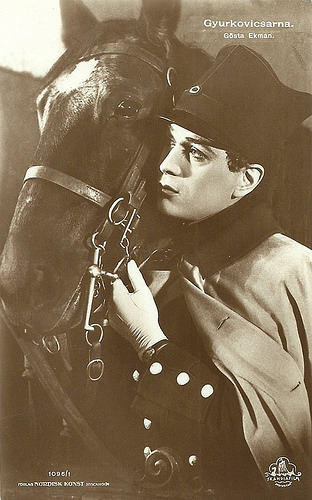
Swedish postcard by Forlag Nordisk Konst, Stockholm, no. 1096/1. Photo: Skandia Film. Gösta Ekman in Gyurkovicsarna/Lieutenant Tophat (John W. Brunius, 1920).
Source: Mikaela Kindblom (Svenska Filminstitutet/Svensk filmdatabas - Swedish), Julie Rongved Amundsen (Store norske leksikon- Norwegian), Mette Hjort and Ursula Lindqvist (A Companion to Nordic Cinema), Wikipedia (English and Swedish), and .

Swedish postcard by Verlag Nordisk Konst, Stockholm, no. 1095/7. Photo: Skandia Film. Pauline Brunius and Jessie Wessel in Thora van Deken (John W. Brunius, 1920).
Extremely successful in queen roles
Pauline Brunius was born Emma Maria Pauline Lindstedt in 1881 in Stockholm, the capital of Sweden. She started as a ballet girl at the Opera in 1891 where she spent ten years. From 1899 till 1902, she had private acting lessons by actress Lotten Dorsch. In 1902, she made her debut as an actress at the Olympiateatern.
During the early 20th century, Pauline Brunius acted in Stockholm's major theatres, the Svenska teatern, Vasateatern and Dramaten. She was considered 'The Queen of Swedish Theatre'. At Svensk filmdatabas , Mikaela Lindblom described her in 2012 as "a classically-educated actress with a magnificent posture, had a melodic voice and was extremely successful in queen roles."
From 1926 till 1932, she was the managing director of the Oscarsteatern together with her husband, actor and film director John W. Brunius and with star actor Gösta Ekman . They changed the operetta theatre into a respected and innovative scene for stage plays.
Pauline Brunius acted in only 13 film roles. Her cinema career started with Thora van Deken/A Mother's Fight (John W. Brunius, 1920), also with Gösta Ekman . The film was based on a short story by Henrik Pontoppidan about a divorced wife of a wealthy landowner who lies in court that her deceased ex-husband had destroyed his will to secure her daughter's inheritance. In 1914, Brunius had already performed this role on stage and the film focuses on her standout performance.
Brunius would be paired again with Gösta Ekman in Gyurkovicsarna/Lieutenant Tophat (1920) - also with Nils Asther , Kärlekens ögon/A Scarlet Angel (1922), Karl XII/Charles XII (1925), and Gustaf Wasa del I/Gustaf Wasa, Part One (1928), always directed by her husband, John W. Brunius.
The silent historical film Karl XII/Charles XII (John W. Brunius, 1925) was released in two separate parts because of its long running time of nearly six hours. The film depicts the life of Charles XII of Sweden (1682-1718) who oversaw the expansion of the Swedish Empire until its defeat at the Battle of Poltava. It was the most expensive production in Swedish history when it was made, and inspired a string of large-budget Swedish historical films.
Pauline Brunius also acted opposite Renée Björling in En vildfågel/Give Me My Son (John W. Brunius, 1921), and opposite Einar Hanson in Gunnar Hedes saga/Snowbound (Mauritz Stiller, 1923).
In 1930, she appeared in the sound film Charlotte Löwensköld (Gustaf Molander, 1930) featuring Birgit Sergelius. It is an adaptation of the 1925 novel Charlotte Löwensköld by Selma Lagerlöf. The film is almost entirely silent, with only brief dialogue sequences and a few sound effects. The film was not considered a success, and no further adaptations of Lagerlöf's work were made in her lifetime.
Brunius co-starred with Victor Sjöström in his sound film Markurells i Wadköping/Father and Son (Victor Sjöström, 1931). However, Pauline Brunius is today best remembered in Sweden for her role as the high-class Mrs. Lindberg in the social comedy Karl Fredrik regerar/Karl Fredrik Reigns (Gustaf Edgren, 1934) with Sigurd Wallén.

Swedish postcard by Verlag Nordisk Konst, Stockholm, no. 1095/9. Photo: Skandia Film. Pauline Brunius, Gösta Ekman , Jessie Wessel and Oscar Johansson in Thora van Deken (John W. Brunius, 1920).
Ten stormy years of stage direction
In the 1920s, Pauline Brunius made a series of short comedies based on her own scripts about the charming Stockholm family Vinner. The series started with Trollsländan/The dragonfly (Pauline Brunius, 1920). The parents were played by the true couple Frida and Olof Winnerstrand and the son Putte by Brunius' son Palle.
Six episodes were made that were shown as short films at the cinema and remind of our current situation and action comedies. Fragments are preserved from De läckra skaldjuren/The Delicious Shellfish (Pauline Brunius, 1920) and Herr Vinners stenåldersdröm/Mr. Winner's Stone Age Dream (Pauline Brunius, 1924), plus a complete version of Lev livet leende/Laugh Live Smile (Pauline Brunius, 1921).
In co-operation with her husband, Pauline Brunius directed her only feature, Falska Greta/The False Greta (John W. Brunius, Pauline Brunius, 1934). The film was inspired by the obsession about Greta Garbo 's Swedish visit in 1928. The script is kept at the Swedish Film Institute's library. Svenska Film's production manager Vilhelm Bryde approved of making the film with the addition of "an entertaining summer anniversary".
In the end the script was filmed without Svenska's participation in Finland as a Swedish-Finnish co-production. The film, with Karin Albihn playing the title role, is today considered lost. Brunius henceforth dedicated herself exclusively to theatre.
In 1938, Pauline Brunius was the first woman, who was appointed managing director of Dramaten, the Royal Dramatic Theatre in Stockholm, since the opening in 1788. She succeeded Olof Molander, who had ruled Dramaten with iron hand.
Brunius had ten stormy years at Dramaten. Leading Sweden's national theatre through the years of the Second World War can't have been easy. She was criticised for a performance by Dramaten in Berlin in 1941. Under Brunius' leadership, Marika Stiernstedt's anti-Nazi play Attentat (The Attack) was staged by Alf Sjöberg in 1944. She was praised for her consciously strong initiative at Dramaten and for her initiative to build a second stage, the Little Stage, to increase the competitiveness and capacity of the national theatre. In 1948, she resigned due to illness.
In 1954, Pauline Brunius died in Stockholm at the age of 73. She had been married to John W. Brunius from 1909 till 1935. Their children were actress Anne-Marie Brunius and actor Palle Brunius. Director Nils Brunius is Pauline Brunius's grandson.

Swedish postcard by Forlag Nordisk Konst, Stockholm, no. 1096/2. Photo: Skandia Film. Gösta Ekman and Pauline Brunius in Gyurkovicsarna/Lieutenant Tophat (John W. Brunius, 1920).

Swedish postcard by Forlag Nordisk Konst, Stockholm, no. 1096/1. Photo: Skandia Film. Gösta Ekman in Gyurkovicsarna/Lieutenant Tophat (John W. Brunius, 1920).
Source: Mikaela Kindblom (Svenska Filminstitutet/Svensk filmdatabas - Swedish), Julie Rongved Amundsen (Store norske leksikon- Norwegian), Mette Hjort and Ursula Lindqvist (A Companion to Nordic Cinema), Wikipedia (English and Swedish), and .
Published on February 23, 2018 22:00
February 22, 2018
ISV
During the 1950s and 1960s, German publisher Ilse-Stern-Verlag better known as ISV produced many film star postcards both in black and white and in colour. Very popular were ISV's postcard series of seven Karl May films of the 1960s.
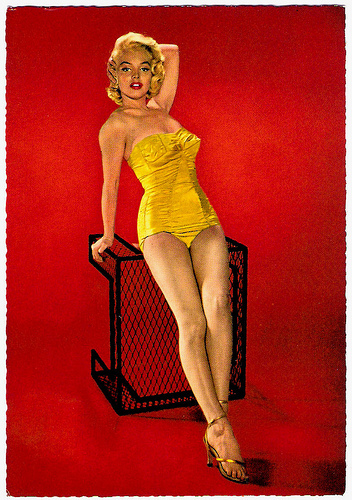
Marilyn Monroe . German postcard by ISV, Sort. VI/6.
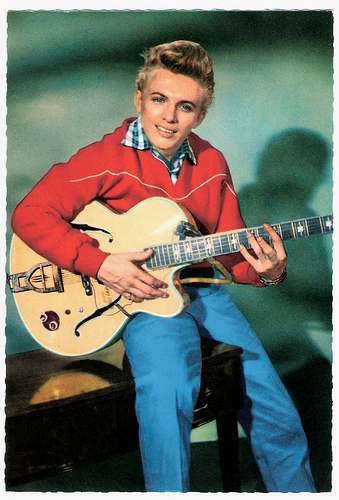
Tommy Steele . German postcard by ISV, no. H 14.
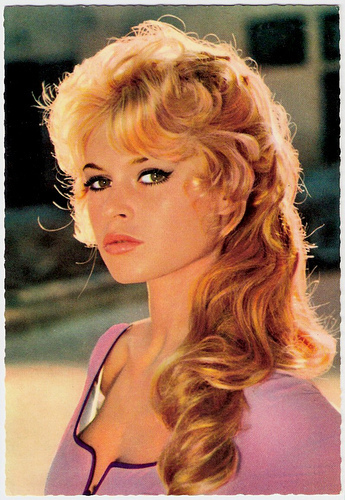
Brigitte Bardot . German postcard by ISV, no. H 11. Photo: Sam Lévin, 1957.

Johnny Hallyday . German postcard by ISV, no. H 85.
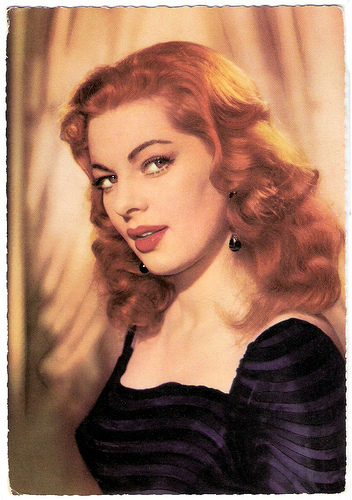
Jester Naefe . German postcard by ISV, no. C 4. Photo: Divina / Gloria / Arthur Grimm.
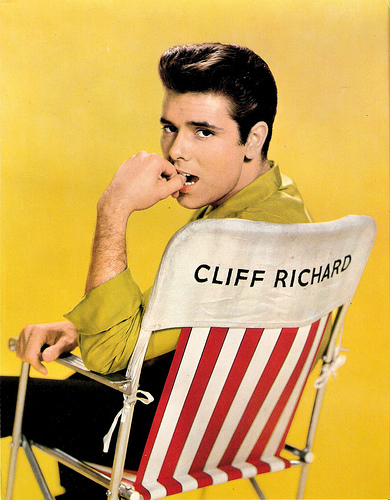
Cliff Richard . Big German postcard by ISV, no. HX 103.
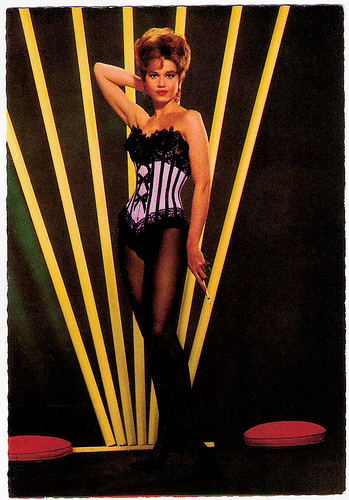
Jane Fonda . German postcard by ISV, Sort. 19/6.
Winnetou
The first Karl May Western with Lex Barker in the role of Old Shatterhand and French actor Pierre Brice as his friend, the Apache-chief Winnetou was Der Schatz im Silbersee/Treasure of Silver Lake (Harald Reinl, 1963).
With this Karl May adaptation, producer Horst Wendlandt, head of Rialto Film, sought to target the younger markets than the audiences that came to his Edgar Wallace thrillers. Der Schatz im Silbersee/Treasure of Silver Lake became the most successful German film of the 1962/1963 season and it even beat the first James Bond film, Dr. No (1962), at the German box offices.
Kids loved the adventures of Winnetou and his friend Old Shatterhand and collected all the film merchandise. The Old Shatterhand-Melodie, the title melody played on the harmonica by René Giessen and composed by Martin Böttcher was the most successful track in the German hitparade in the 1960s. It stayed there for several months and over 100,000 copies were sold. Ilse-Stern-Verlag produced a series of 64 postcards of the film which also became a hit.
In total ISV produced seven postcard series of Karl May films: Der Schatz im Silbersee/Treasure of Silver Lake (Harald Reinl, 1963), Winnetou - 1. Teil/Apache Gold (Harald Reinl, 1963), Winnetou – 2. Teil/Last of the Renegades (Harald Reinl, 1964), Unter Geiern/Among Vultures (Alfred Vohrer, 1964), Der Ölprinz/The Oil Prince (Harald Philipp, 1965), Durchs wilde Kurdistan/Wild Kurdistan (Franz Josef Gottlieb, 1965), and Winnetou 3. Teil/Winnetou: The Last Shot (Harald Reinl, 1965).
The Karl May postcards were sold by ISV in surprise bags and with a portion of puffed rice. All postcards were in the typical postcard format to send by mail and with a caption about the film scene of which the photograph was taken. The complete Karl May postcard series published by ISV consists of a total of 233 colour postcards.
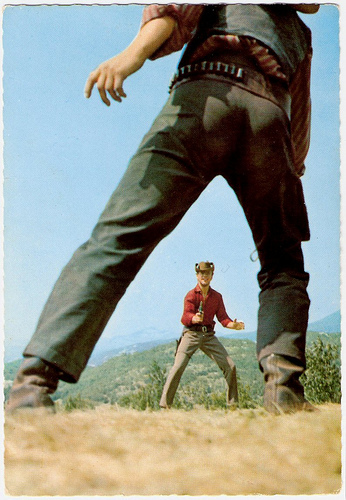
Götz George in Der Schatz im Silbersee (1962). German postcard, no. E 61. Photo: Constantin. Still for Der Schatz im Silbersee/The Treasure of Silver Lake (Harald Reinl, 1962).
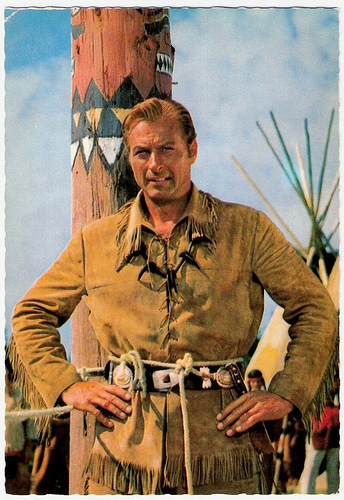
Lex Barker in Winnetou I (1963). German postcard, no. E 23. Photo: Constantin. Still from Winnetou I (Harald Reinl, 1963). Caption: "Old Shatterhand has also been sentenced to die at the stake. He regrets emphatically, that he rescued Winnetou from the Kiowas. An ordeal by battle will decide."
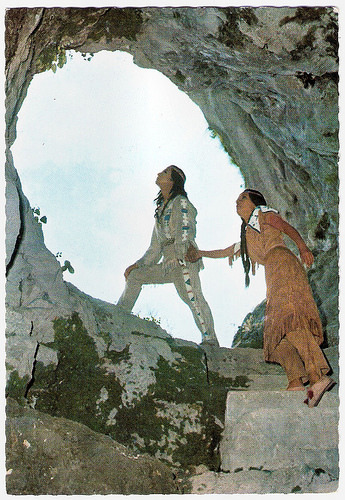
Pierre Brice and Karin Dor in Winnetou II. Teil (1964). German postcard, no. R 8. Photo: publicity still for Winnetou 2. Teil/Winnetou: The Red Gentleman (Harald Reinl, 1964). Caption: "Noch ahnt man nicht, wie bald von diesem Versteck Gebrauch gemacht werden muss; den Forrester, der sein dunkles Gerwerbe auf Kosten der Indianer betreibt, schmiedet schon Pläne." (Yet nobody suspects how soon this hiding place must be used; Forrester, who runs his shady business at the expense of the Indians, already makes his plans).
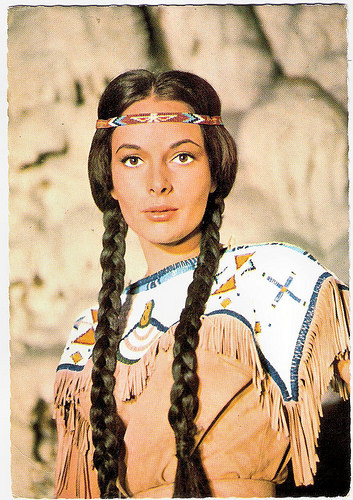
Karin Dor in Winnetou II. Teil (1964). German postcard, no. R 30. Photo: publicity still for Winnetou 2. Teil/Winnetou: The Red Gentleman (Harald Reinl, 1964). Caption: Der Friede ist gerettet. Ribanna weiss, dass ihr und Winnetous Opfer nicht umsonst war. (Peace is saved. Ribanna knows that her and Winnetou's sacrifice was not in vain.)
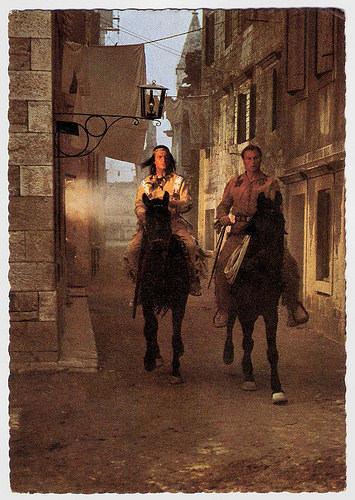
Pierre Brice and Lex Barker in Winnetou III. Teil/Winnetou: The Last Shot (Harald Reinl, 1965). German postcard, no. 3. Photo: Rialto / Constantin. Publicity still for Winnetou III. Teil/Winnetou: The Last Shot (Harald Reinl, 1965). Caption: "Während Winnetou und Old Shatterhand zurückreiten, berichtet der Sekretär des Gouverneurs - der dem Letter des Desperados als Spitzel dient - von der Unterredung. Man beschliesst den Tod Winnetous und Old Shatterhands, der als Unfall hergestellt werden soll, und zwar durch vorzeitige Sprengung des Steinbruchs." (While Winnetou and Old Shatterhand ride back, the secretary of the governor reports about the conversation - which letter serves the spying Desperados. They decide to kill Winnetou and Old Shatterhand, produced as an accident, by premature detonation of the quarry.)
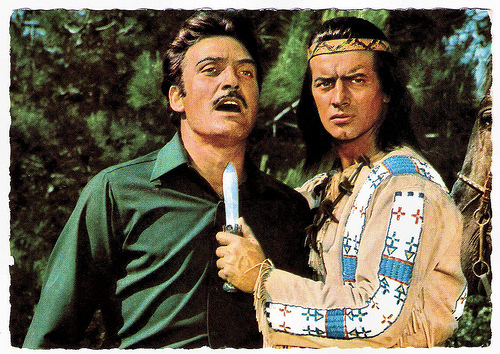
Rik Battaglia and Pierre Brice in Winnetou 3. Teil (1965). German postcard, no. 9. Photo: Rialto / Constantin. Publicity still for Winnetou - 3. Teil/Winnetou: The Last Shot (Harald Reinl, 1965).
Source: Karl May Wiki (German), Wikipedia and IMDb.

Marilyn Monroe . German postcard by ISV, Sort. VI/6.

Tommy Steele . German postcard by ISV, no. H 14.

Brigitte Bardot . German postcard by ISV, no. H 11. Photo: Sam Lévin, 1957.

Johnny Hallyday . German postcard by ISV, no. H 85.

Jester Naefe . German postcard by ISV, no. C 4. Photo: Divina / Gloria / Arthur Grimm.

Cliff Richard . Big German postcard by ISV, no. HX 103.

Jane Fonda . German postcard by ISV, Sort. 19/6.
Winnetou
The first Karl May Western with Lex Barker in the role of Old Shatterhand and French actor Pierre Brice as his friend, the Apache-chief Winnetou was Der Schatz im Silbersee/Treasure of Silver Lake (Harald Reinl, 1963).
With this Karl May adaptation, producer Horst Wendlandt, head of Rialto Film, sought to target the younger markets than the audiences that came to his Edgar Wallace thrillers. Der Schatz im Silbersee/Treasure of Silver Lake became the most successful German film of the 1962/1963 season and it even beat the first James Bond film, Dr. No (1962), at the German box offices.
Kids loved the adventures of Winnetou and his friend Old Shatterhand and collected all the film merchandise. The Old Shatterhand-Melodie, the title melody played on the harmonica by René Giessen and composed by Martin Böttcher was the most successful track in the German hitparade in the 1960s. It stayed there for several months and over 100,000 copies were sold. Ilse-Stern-Verlag produced a series of 64 postcards of the film which also became a hit.
In total ISV produced seven postcard series of Karl May films: Der Schatz im Silbersee/Treasure of Silver Lake (Harald Reinl, 1963), Winnetou - 1. Teil/Apache Gold (Harald Reinl, 1963), Winnetou – 2. Teil/Last of the Renegades (Harald Reinl, 1964), Unter Geiern/Among Vultures (Alfred Vohrer, 1964), Der Ölprinz/The Oil Prince (Harald Philipp, 1965), Durchs wilde Kurdistan/Wild Kurdistan (Franz Josef Gottlieb, 1965), and Winnetou 3. Teil/Winnetou: The Last Shot (Harald Reinl, 1965).
The Karl May postcards were sold by ISV in surprise bags and with a portion of puffed rice. All postcards were in the typical postcard format to send by mail and with a caption about the film scene of which the photograph was taken. The complete Karl May postcard series published by ISV consists of a total of 233 colour postcards.

Götz George in Der Schatz im Silbersee (1962). German postcard, no. E 61. Photo: Constantin. Still for Der Schatz im Silbersee/The Treasure of Silver Lake (Harald Reinl, 1962).

Lex Barker in Winnetou I (1963). German postcard, no. E 23. Photo: Constantin. Still from Winnetou I (Harald Reinl, 1963). Caption: "Old Shatterhand has also been sentenced to die at the stake. He regrets emphatically, that he rescued Winnetou from the Kiowas. An ordeal by battle will decide."

Pierre Brice and Karin Dor in Winnetou II. Teil (1964). German postcard, no. R 8. Photo: publicity still for Winnetou 2. Teil/Winnetou: The Red Gentleman (Harald Reinl, 1964). Caption: "Noch ahnt man nicht, wie bald von diesem Versteck Gebrauch gemacht werden muss; den Forrester, der sein dunkles Gerwerbe auf Kosten der Indianer betreibt, schmiedet schon Pläne." (Yet nobody suspects how soon this hiding place must be used; Forrester, who runs his shady business at the expense of the Indians, already makes his plans).

Karin Dor in Winnetou II. Teil (1964). German postcard, no. R 30. Photo: publicity still for Winnetou 2. Teil/Winnetou: The Red Gentleman (Harald Reinl, 1964). Caption: Der Friede ist gerettet. Ribanna weiss, dass ihr und Winnetous Opfer nicht umsonst war. (Peace is saved. Ribanna knows that her and Winnetou's sacrifice was not in vain.)

Pierre Brice and Lex Barker in Winnetou III. Teil/Winnetou: The Last Shot (Harald Reinl, 1965). German postcard, no. 3. Photo: Rialto / Constantin. Publicity still for Winnetou III. Teil/Winnetou: The Last Shot (Harald Reinl, 1965). Caption: "Während Winnetou und Old Shatterhand zurückreiten, berichtet der Sekretär des Gouverneurs - der dem Letter des Desperados als Spitzel dient - von der Unterredung. Man beschliesst den Tod Winnetous und Old Shatterhands, der als Unfall hergestellt werden soll, und zwar durch vorzeitige Sprengung des Steinbruchs." (While Winnetou and Old Shatterhand ride back, the secretary of the governor reports about the conversation - which letter serves the spying Desperados. They decide to kill Winnetou and Old Shatterhand, produced as an accident, by premature detonation of the quarry.)

Rik Battaglia and Pierre Brice in Winnetou 3. Teil (1965). German postcard, no. 9. Photo: Rialto / Constantin. Publicity still for Winnetou - 3. Teil/Winnetou: The Last Shot (Harald Reinl, 1965).
Source: Karl May Wiki (German), Wikipedia and IMDb.
Published on February 22, 2018 22:00
February 21, 2018
Max Linder
French comedian Max Linder (1883-1925), with his trademark silk hat, stick and moustache, was an influential pioneer of the silent film. He was largely responsible for the creation of the classic slapstick comedy.
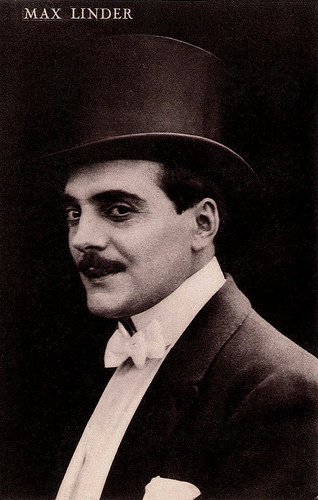
French postcard by Helio Paul et Vigier, Paris. Publicity card for the Pathé-Baby projector.
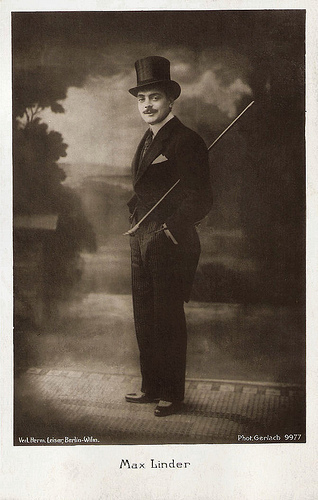
German postcard by Verlag Herm. Leiser, no. 9977. Photo: Gerlach.
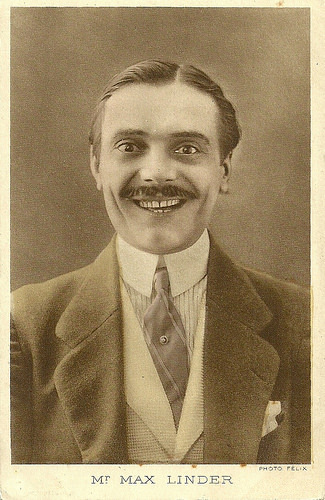
French postcard by Pathé Frères. Photo: Felix.
Gentleman Max
Max Linder was born Gabriel-Maximilien Leuvielle in Saint-Loubès, France in 1883 to a Jewish wine growing family.
He grew up with a passion for the stage and at 17 he dropped out of school in order to join a touring theatre troupe, which did not please his parents.
While working in Paris as an actor in the theatre and vaudeville, Leuvielle became fascinated with motion pictures. In 1905 he took a job with Pathé Frères and in the following years he became a comedic actor, director, screenwriter, as well as a producer under the stage name, Max Linder.
His debut was La première sortie d'un collégien/First Night Out (Louis J. Gasnier, 1905). He created what was probably the first identifiable film character: ‘Max’, an elegant, joyful, romantic, top-hatted dandy.
Max appeared for the first time in Les Debuts d'un patineur/Max Learns to Skate (Louis J. Gasnier, 1907) and would return in successive situation comedies. ‘Gentleman Max’ was frequently in hot water because of his penchant for beautiful women and the good life.
When in the credits for Max et la doctoresse/Max and the female doctor (Max Linder, 1909) the text “written by Max Linder and played by the author” appeared, it was the first time in film history that an author was mentioned in connection with a cinematic work.
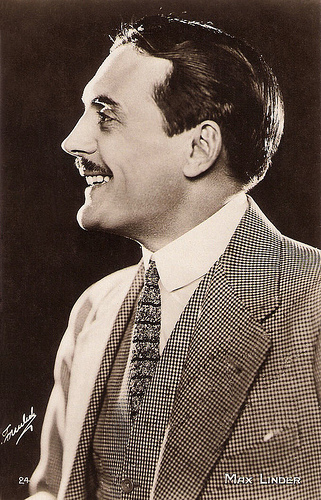
French postcard by Cinémagazine, no. 24.
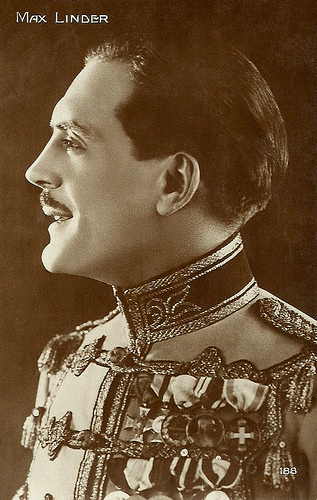
French postcard by Cinémagazine, no. 188.
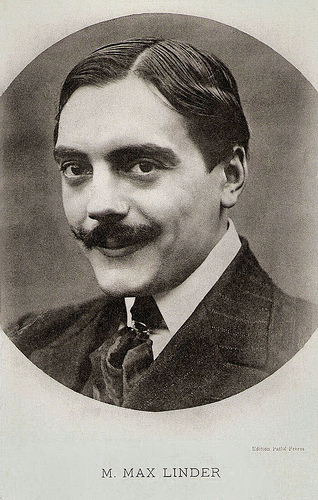
French postcard by Edition Pathé Frères.
Comedy Star No. 1
After comedian André Deed went to Italy, Max Linder moved up and became the comedy star no. 1 for Pathé.
In 1910 he shot one comedy each week. By 1911, Linder was directing all his own films as well as writing the script and the universality of silent films brought Linder fame and fortune throughout Europe. By 1912, he was the highest-paid film star in the world, with an unprecedented salary of one million francs.
His success didn't have any limits: whether Spain, Germany, Italy or Russia, Max Linder was everywhere welcomed with enthusiasm during his live entrances in the capital cities. In Russia the police had to call the Army for help so that Linder was able to leave the Moscow railroad station.
One of the best and more successful examples of his type of humour is the one-reeler Max et la Statue/Max and the Statue (Max Linder, 1912). Max attends a costume ball, dressed as a suit of armor. After drinking too much at the party, he passes out on the sidewalk. Meanwhile, during the evening, a new suit of armour to be unveiled at the Louvre the next day is stolen by a pair of thieves. The police, discovering the theft, stumble upon Max. They take him back to the Louvre where he is unveiled for the Museum committee. They depart, whereupon the thieves return, take Max, and, back in the hideout, attempt to open the armour with tools. Max awakens, scares the burglars, then, in the final frame, strolls away, strumming a guitar.
The weekly adventures of Max were impatiently awaited by faithful and enthusiastic audiences. In 1914 Linder decided to realise one of his old dreams: to start a cinema. He bought a cinema in Paris with 1,200 sears, created in 1912, the Kosmorama. The Ciné Max Linder opened in December 1914.
World War I brought a temporary end to Linder's career in film. Physically unfit for combat duty, he worked as a dispatch driver during the war until he was seriously wounded. He was gassed, and the illness that resulted would blight his career.
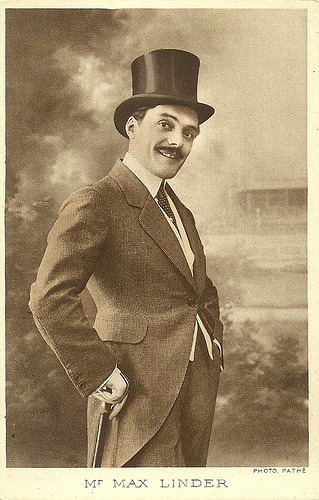
French postcard. Photo Pathé.
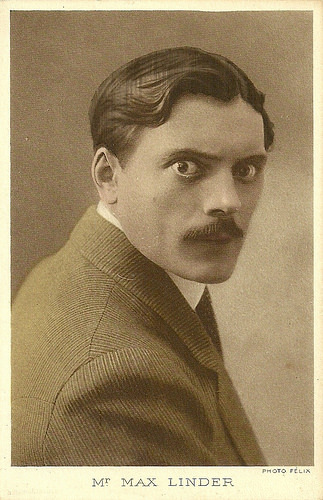
French postcard by Pathé Frères. Photo: Felix.
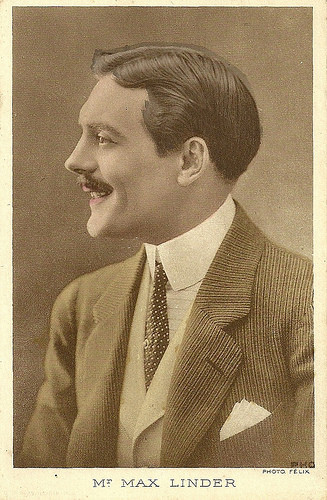
French postcard by Pathé Frères. Photo: Felix.
America
While in the hospital in 1916, Max Linder was visited by George K. Spoor, president of Essanay films. Having lost Charlie Chaplin, Spoor wanted Linder to "take his place" and offered him $5,000 per week to write, direct, and star in 12 three-reel comedies to be made in the studio's Chicago location.
Linder went to the US, but his first few American-made Max films didn't make the same impression as the Chaplin shorts. Recurring ill-health meant that his US films had little of the sparkle of his early French work. After only three films were completed Linder headed back to France.
For the convalescence of his pleurisy, Linder went to the lake of Geneva. In 1919 it seemed like Max was his old self again and his screen version of Le Petit Café/The Little Cafe (Raymond Bernard, 1919) was received enthusiastically by critics and audiences on both sides of the Atlantic.
He made another attempt at film making in the US for the recently-formed United Artists (one of whose founders was Charles Chaplin ). He worked as a film producer, screenwriter, director and leading actor in three films: Seven Years Bad Luck (Max Linder, 1921), Be My Wife (Max Linder, 1921), and the film he considered his best, the inventive parody The Three Must-Get-Theres (Max Linder, 1922).
Endowed with an overflowing imagination, he filled his films with an inexhaustible variety of gags. For example, Max was the original creator of the genius mirror gag in Seven Years Bad Luck, which the Marx Brothers used again so memorably in their film Duck Soup (Leo McCarey, 1933). These later films are now regarded as classics.
However, the work exhausted Max, and after finishing the last film he left the United States once again. Back in France he appeared in only two more films. In Au Secours!/Help! (Abel Gance, 1923) he played a tragic part. Later he forbade the showing because he feared his reputation as a comedian was in danger.
His last film, Der Zirkuskönig/King of the Circus (Max Linder, Édouard-Émile Violet, 1924) with Vilma Bánky , was made in Vienna, Austria. For the film Chevalier Barkas/The Knight Barkas he contacted the in those days unknown director René Clair. But the film would never be realised.
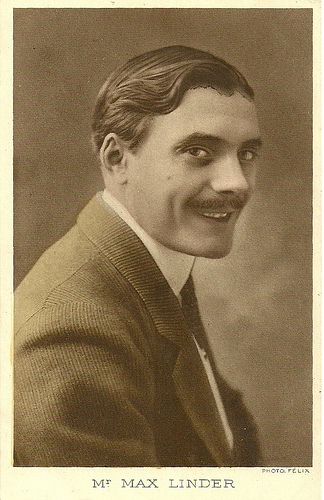
French postcard by Pathé Frères. Photo: Felix.
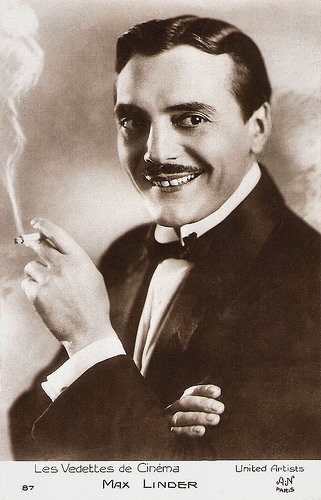
French postcard by A.N, Paris in the Les Vedettes de Cinéma series, no. 87. Photo: United Artists.
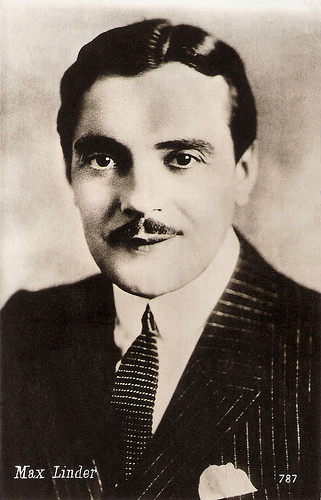
Italian postcard by Casa Editrice Ballerini & Fratini, Firenze, no. 787.
Suicide Pact
The after-effects of Max Linder's war service was that he suffered from continuing health problems including bouts of severe depression.
In 1923, he married the 18 year old Hélène Peters, a wealthy Paris heiress, with whom he had a daughter, Maud. At the same year he sold his Max Linder cinema.
The emotional problems besetting Linder evidenced themselves when he and his wife made a suicide pact. In early 1924 they attempted suicide at a hotel in Vienna, Austria. They were found and were recuperated, but on 31 October 1925 Linder and his wife were successful in taking their lives in Paris.
After Linder's death, Chaplin dedicated one of his films: "For the unique Max, the great master - his student Charles Chaplin". But in the ensuing years, Max Linder was relegated to little more than a footnote in film history.
In 1963, a compilation film titled En compagnie de Max Linder/Laugh with Max Linder was released. Later his daughter made a documentary film titled L'homme au chapeau de soie/The Man in the Silk Hat (Maud Linder, 1983). Max Linder's comic gestures, planned expressions, anachronisms, contrasts, and use of the unexpected, as well as his comic chase scenes (pursuits) became again the inspiration for young comedians.
Max Linder appeared in more than 400 films, mostly short comedies. Only about 80 survive. His daughter and the keeper of his heritage, Maud Linder, passed away on 25 October 2017).
Clip with Max Linder and Maurice Tourneur in Champion de boxe/Boxing Champion (1910). Source: TheBzzz (YouTube).
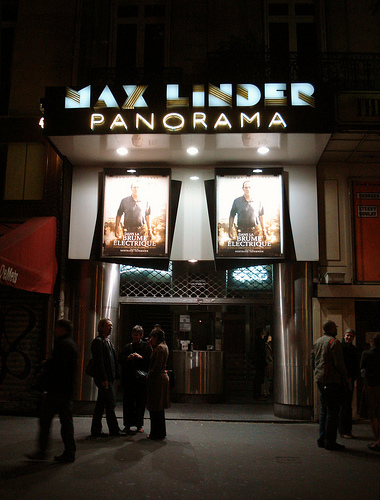
A May 2009 photo of the Max Linder cinema in Paris.
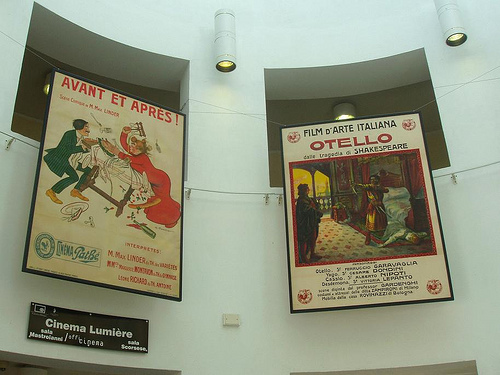
Left a poster for the Max Linder comedy Avant et après/Before and After, exhibited at the Cinema Ritrovato festival 2009. Atrium of the Lumiere cinema, Bologna, Italy.
Sources: Thomas Staedeli (Cyranos), (IMDb), Wikipedia, Golden Silents, and .

French postcard by Helio Paul et Vigier, Paris. Publicity card for the Pathé-Baby projector.

German postcard by Verlag Herm. Leiser, no. 9977. Photo: Gerlach.

French postcard by Pathé Frères. Photo: Felix.
Gentleman Max
Max Linder was born Gabriel-Maximilien Leuvielle in Saint-Loubès, France in 1883 to a Jewish wine growing family.
He grew up with a passion for the stage and at 17 he dropped out of school in order to join a touring theatre troupe, which did not please his parents.
While working in Paris as an actor in the theatre and vaudeville, Leuvielle became fascinated with motion pictures. In 1905 he took a job with Pathé Frères and in the following years he became a comedic actor, director, screenwriter, as well as a producer under the stage name, Max Linder.
His debut was La première sortie d'un collégien/First Night Out (Louis J. Gasnier, 1905). He created what was probably the first identifiable film character: ‘Max’, an elegant, joyful, romantic, top-hatted dandy.
Max appeared for the first time in Les Debuts d'un patineur/Max Learns to Skate (Louis J. Gasnier, 1907) and would return in successive situation comedies. ‘Gentleman Max’ was frequently in hot water because of his penchant for beautiful women and the good life.
When in the credits for Max et la doctoresse/Max and the female doctor (Max Linder, 1909) the text “written by Max Linder and played by the author” appeared, it was the first time in film history that an author was mentioned in connection with a cinematic work.

French postcard by Cinémagazine, no. 24.

French postcard by Cinémagazine, no. 188.

French postcard by Edition Pathé Frères.
Comedy Star No. 1
After comedian André Deed went to Italy, Max Linder moved up and became the comedy star no. 1 for Pathé.
In 1910 he shot one comedy each week. By 1911, Linder was directing all his own films as well as writing the script and the universality of silent films brought Linder fame and fortune throughout Europe. By 1912, he was the highest-paid film star in the world, with an unprecedented salary of one million francs.
His success didn't have any limits: whether Spain, Germany, Italy or Russia, Max Linder was everywhere welcomed with enthusiasm during his live entrances in the capital cities. In Russia the police had to call the Army for help so that Linder was able to leave the Moscow railroad station.
One of the best and more successful examples of his type of humour is the one-reeler Max et la Statue/Max and the Statue (Max Linder, 1912). Max attends a costume ball, dressed as a suit of armor. After drinking too much at the party, he passes out on the sidewalk. Meanwhile, during the evening, a new suit of armour to be unveiled at the Louvre the next day is stolen by a pair of thieves. The police, discovering the theft, stumble upon Max. They take him back to the Louvre where he is unveiled for the Museum committee. They depart, whereupon the thieves return, take Max, and, back in the hideout, attempt to open the armour with tools. Max awakens, scares the burglars, then, in the final frame, strolls away, strumming a guitar.
The weekly adventures of Max were impatiently awaited by faithful and enthusiastic audiences. In 1914 Linder decided to realise one of his old dreams: to start a cinema. He bought a cinema in Paris with 1,200 sears, created in 1912, the Kosmorama. The Ciné Max Linder opened in December 1914.
World War I brought a temporary end to Linder's career in film. Physically unfit for combat duty, he worked as a dispatch driver during the war until he was seriously wounded. He was gassed, and the illness that resulted would blight his career.

French postcard. Photo Pathé.

French postcard by Pathé Frères. Photo: Felix.

French postcard by Pathé Frères. Photo: Felix.
America
While in the hospital in 1916, Max Linder was visited by George K. Spoor, president of Essanay films. Having lost Charlie Chaplin, Spoor wanted Linder to "take his place" and offered him $5,000 per week to write, direct, and star in 12 three-reel comedies to be made in the studio's Chicago location.
Linder went to the US, but his first few American-made Max films didn't make the same impression as the Chaplin shorts. Recurring ill-health meant that his US films had little of the sparkle of his early French work. After only three films were completed Linder headed back to France.
For the convalescence of his pleurisy, Linder went to the lake of Geneva. In 1919 it seemed like Max was his old self again and his screen version of Le Petit Café/The Little Cafe (Raymond Bernard, 1919) was received enthusiastically by critics and audiences on both sides of the Atlantic.
He made another attempt at film making in the US for the recently-formed United Artists (one of whose founders was Charles Chaplin ). He worked as a film producer, screenwriter, director and leading actor in three films: Seven Years Bad Luck (Max Linder, 1921), Be My Wife (Max Linder, 1921), and the film he considered his best, the inventive parody The Three Must-Get-Theres (Max Linder, 1922).
Endowed with an overflowing imagination, he filled his films with an inexhaustible variety of gags. For example, Max was the original creator of the genius mirror gag in Seven Years Bad Luck, which the Marx Brothers used again so memorably in their film Duck Soup (Leo McCarey, 1933). These later films are now regarded as classics.
However, the work exhausted Max, and after finishing the last film he left the United States once again. Back in France he appeared in only two more films. In Au Secours!/Help! (Abel Gance, 1923) he played a tragic part. Later he forbade the showing because he feared his reputation as a comedian was in danger.
His last film, Der Zirkuskönig/King of the Circus (Max Linder, Édouard-Émile Violet, 1924) with Vilma Bánky , was made in Vienna, Austria. For the film Chevalier Barkas/The Knight Barkas he contacted the in those days unknown director René Clair. But the film would never be realised.

French postcard by Pathé Frères. Photo: Felix.

French postcard by A.N, Paris in the Les Vedettes de Cinéma series, no. 87. Photo: United Artists.

Italian postcard by Casa Editrice Ballerini & Fratini, Firenze, no. 787.
Suicide Pact
The after-effects of Max Linder's war service was that he suffered from continuing health problems including bouts of severe depression.
In 1923, he married the 18 year old Hélène Peters, a wealthy Paris heiress, with whom he had a daughter, Maud. At the same year he sold his Max Linder cinema.
The emotional problems besetting Linder evidenced themselves when he and his wife made a suicide pact. In early 1924 they attempted suicide at a hotel in Vienna, Austria. They were found and were recuperated, but on 31 October 1925 Linder and his wife were successful in taking their lives in Paris.
After Linder's death, Chaplin dedicated one of his films: "For the unique Max, the great master - his student Charles Chaplin". But in the ensuing years, Max Linder was relegated to little more than a footnote in film history.
In 1963, a compilation film titled En compagnie de Max Linder/Laugh with Max Linder was released. Later his daughter made a documentary film titled L'homme au chapeau de soie/The Man in the Silk Hat (Maud Linder, 1983). Max Linder's comic gestures, planned expressions, anachronisms, contrasts, and use of the unexpected, as well as his comic chase scenes (pursuits) became again the inspiration for young comedians.
Max Linder appeared in more than 400 films, mostly short comedies. Only about 80 survive. His daughter and the keeper of his heritage, Maud Linder, passed away on 25 October 2017).
Clip with Max Linder and Maurice Tourneur in Champion de boxe/Boxing Champion (1910). Source: TheBzzz (YouTube).

A May 2009 photo of the Max Linder cinema in Paris.

Left a poster for the Max Linder comedy Avant et après/Before and After, exhibited at the Cinema Ritrovato festival 2009. Atrium of the Lumiere cinema, Bologna, Italy.
Sources: Thomas Staedeli (Cyranos), (IMDb), Wikipedia, Golden Silents, and .
Published on February 21, 2018 22:00
February 20, 2018
Die Austernprinzessin (1919)
In his early European films, director Ernst Lubitsch alternated between escapist comedies and large-scale historical dramas, enjoying great international success with both. A triumph was Die Austernprinzessin/The Oyster Princess (Ernst Lubitsch, 1919), featuring Ossi Oswalda. It is a sparkling satire caricaturising American manners.
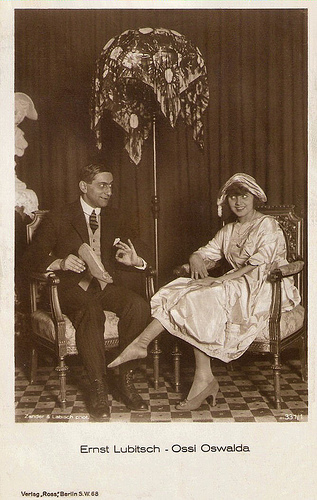
Ernst Lubitsch and Ossi Oswalda . German postcard by Ross Verlag, Berlin, no. 337/1, 1919-1924. Photo: Zander & Labisch.
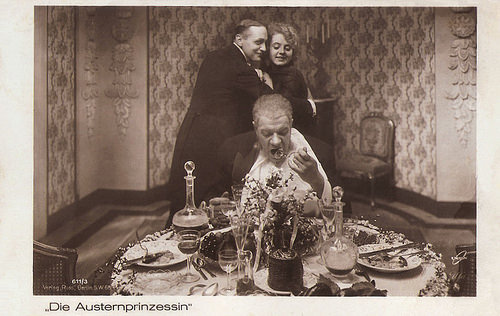
German postcard by Ross Verlag, Berlin, no. 611/3. Photo: Union / Ufa. Publicity still for Die Austernprinzessin/The Oyster Princess (Ernst Lubitsch, 1919) with Victor Janson, Ossi Oswalda and Harry Liedtke .
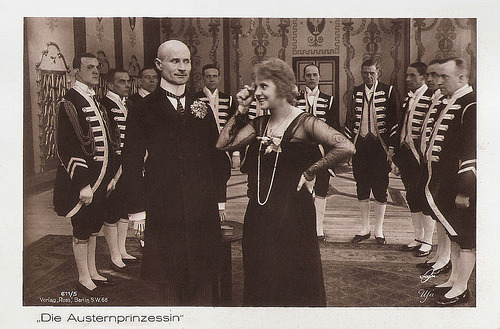
German postcard by Ross Verlag, Berlin, no. 611/5. Photo: Union / Ufa. Publicity still for Die Austernprinzessin/The Oyster Princess (Ernst Lubitsch, 1919) with Julius Falkenstein and Ossi Oswalda.
A miracle of screen acting and directing
Ossi Oswalda plays a spoilt American heiress, the daughter of Mister Quaker (Victor Janson), the oyster-king of America. Quaker cannot be impressed anymore. He is so rich that he even has a special butler holding his cigar while he is smoking.
Ossi throws a jealous fit because the daughter of the 'Shoe-cream king' has married a count. Quaker promises his daughter he will find her a real prince. He makes an offer to the impoverished prince Nucki ( Harry Liedtke ) who lives in a one-room apartment.
Nucki sends his friend Josef (Julius Falkenstein) to get a clear idea of the woman. Josef introduces himself under the guise of the prince's name! Mistaken identity in place, the film's madcap humor takes off from there.
Ernst Lubitsch made this wonderful, a bit surrealistic comedy when he was only 27. His co-writer is Hanns Kräly who became an Oscar winner later on for his writing on Lubitsch's films. Highlighta here include a meticulously choreographed 'foxtrot epidemic' and a mass boxing-match among a group of billionaire's daughters.
Gerard Lenz at IMDb : " Ossi Oswalda (...) somehow manages to be tempestuous, spiteful, spoiled, endearing, lovable and sexy at the same time. A miracle of screen acting and directing. Stemming from 1919, the film reflects the coming of a new age of relative sexual freedom, female self-determination and the resignation of the aristocracy as the determining force of Central European society after the defeat of the World War."
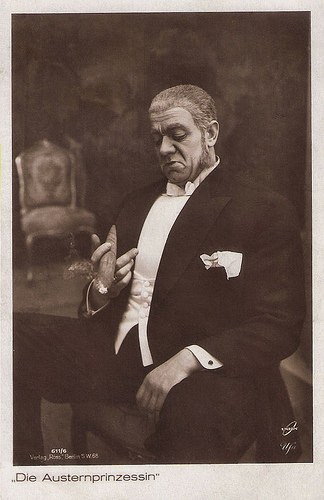
German postcard by Ross Verlag, Berlin, no. 611/6. Photo: Union / Ufa. Publicity still for Die Austernprinzessin/The Oyster Princess (Ernst Lubitsch, 1919) with Victor Janson.
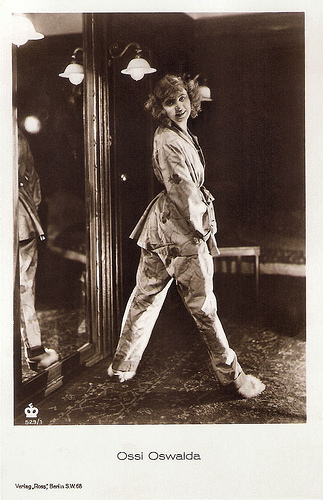
Ossi Oswalda . German postcard by Ross Verlag, Berlin, no. 529/1, 1919-1924. Photo: Ossi Oswalda-Film.
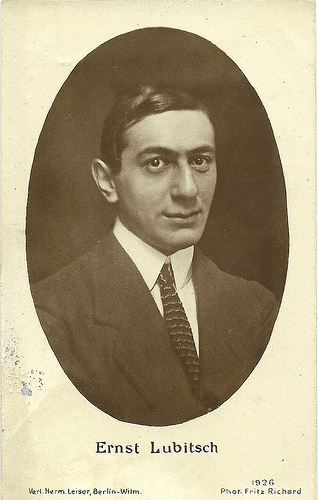
Ernst Lubitsch . German postcard by Verlag Hermann Leiser, Berlin-Wilm., no. 1926. Photo: Fritz Richard. Collection: Didier Hanson.
Sources: Gerard Lenz (IMDb), Wikipedia and IMDb.

Ernst Lubitsch and Ossi Oswalda . German postcard by Ross Verlag, Berlin, no. 337/1, 1919-1924. Photo: Zander & Labisch.

German postcard by Ross Verlag, Berlin, no. 611/3. Photo: Union / Ufa. Publicity still for Die Austernprinzessin/The Oyster Princess (Ernst Lubitsch, 1919) with Victor Janson, Ossi Oswalda and Harry Liedtke .

German postcard by Ross Verlag, Berlin, no. 611/5. Photo: Union / Ufa. Publicity still for Die Austernprinzessin/The Oyster Princess (Ernst Lubitsch, 1919) with Julius Falkenstein and Ossi Oswalda.
A miracle of screen acting and directing
Ossi Oswalda plays a spoilt American heiress, the daughter of Mister Quaker (Victor Janson), the oyster-king of America. Quaker cannot be impressed anymore. He is so rich that he even has a special butler holding his cigar while he is smoking.
Ossi throws a jealous fit because the daughter of the 'Shoe-cream king' has married a count. Quaker promises his daughter he will find her a real prince. He makes an offer to the impoverished prince Nucki ( Harry Liedtke ) who lives in a one-room apartment.
Nucki sends his friend Josef (Julius Falkenstein) to get a clear idea of the woman. Josef introduces himself under the guise of the prince's name! Mistaken identity in place, the film's madcap humor takes off from there.
Ernst Lubitsch made this wonderful, a bit surrealistic comedy when he was only 27. His co-writer is Hanns Kräly who became an Oscar winner later on for his writing on Lubitsch's films. Highlighta here include a meticulously choreographed 'foxtrot epidemic' and a mass boxing-match among a group of billionaire's daughters.
Gerard Lenz at IMDb : " Ossi Oswalda (...) somehow manages to be tempestuous, spiteful, spoiled, endearing, lovable and sexy at the same time. A miracle of screen acting and directing. Stemming from 1919, the film reflects the coming of a new age of relative sexual freedom, female self-determination and the resignation of the aristocracy as the determining force of Central European society after the defeat of the World War."

German postcard by Ross Verlag, Berlin, no. 611/6. Photo: Union / Ufa. Publicity still for Die Austernprinzessin/The Oyster Princess (Ernst Lubitsch, 1919) with Victor Janson.

Ossi Oswalda . German postcard by Ross Verlag, Berlin, no. 529/1, 1919-1924. Photo: Ossi Oswalda-Film.

Ernst Lubitsch . German postcard by Verlag Hermann Leiser, Berlin-Wilm., no. 1926. Photo: Fritz Richard. Collection: Didier Hanson.
Sources: Gerard Lenz (IMDb), Wikipedia and IMDb.
Published on February 20, 2018 22:00
February 19, 2018
Ruth Weyher
Ruth Weyher (1901-1983) was a beautiful and passionate actress of the German silent cinema. She appeared in 48 films between 1920 and 1930. Among her best known films are the expressionist classic Schatten/Warning Shadows (1923) and G.W. Pabst's Freudian Geheimnisse einer Seele/Secrets of a Soul (1926).

Austrian postcard by Iris Verlag, no. 5059. Photo: Manassé, Wien.
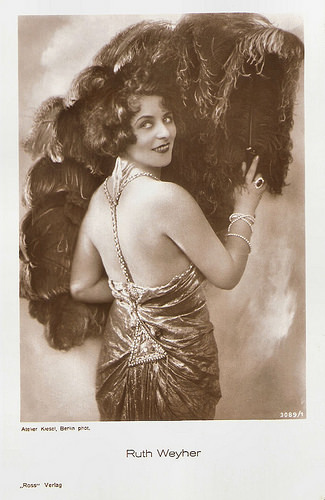
German postcard by Ross Verlag, no. 3089/1, 1928-1929. Photo: Atelier Kiesel, Berlin.
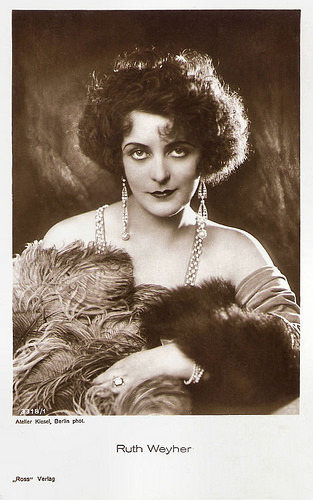
German postcard by Ross Verlag, no. 3318/1, 1928-1929. Photo: Atelier Kiesel, Berlin.
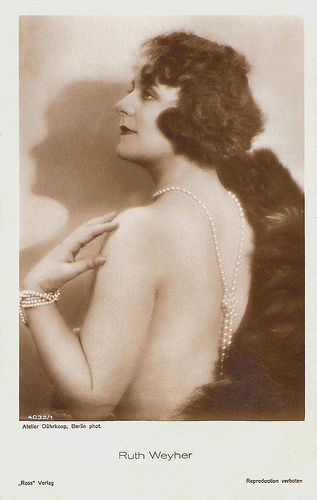
German postcard by Ross Verlag, Berlin, no. 4032/1, 1929-1930. Photo: Atelier Dührkoop, Berlin.
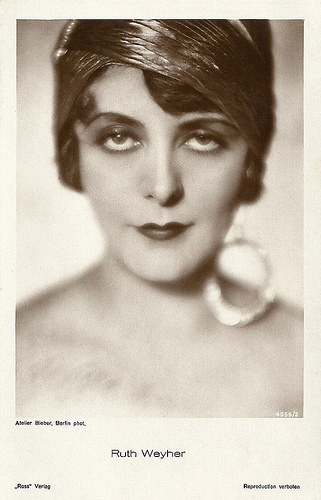
German postcard by Ross Verlag, Berlin, no. 4056/2, 1929-1930. Photo: Atelier Bieber, Berlin.
The Adventurous Or Passionate Woman
Ruth Ellen Weyher was born in 1901 in Neumark, West Prussia (now Nowinjasta, Poland). She was the daughter of law inspector Paul Ferdinand Weyher and his wife Lätitia Theone Weyher-Schulze. She grew up in Danzig (now Gdansk, Poland), until she moved with her parents and brother to Halle in 1914.
She studied painting at the Kunstgewerbeschule in Halle, but she switched to the conservatory to study singing. Due to a serious illness she lost her singing voice and in 1919 she went to Berlin where she visited the acting school of the Deutsches Theater and was a pupil of Max Reinhardt. In Munich, Weyher had her debut as a stage actress.
Already in 1919 she got her first film roles. In countless entertainment films she played the adventurous or passionate woman, as in Die Wahrsagerin von Paris/The fortune-teller of Paris (Hans Heinz Hartt, 1920), Sterbende Völker/Dying people (Robert Reinert, 1922) with Aud Egede Nissen , Das alte Gesetz/This Ancient Law (Ewald André Dupont, 1923) starring Henny Porten , and the classic Expressionist film Schatten/Warning Shadows (Arthur Robison, 1923).
In Schatten, Weyher played the beautiful wife of a jealous count ( Fritz Kortner ), who suspects her of infidelity. During a banquet, he becomes enraged with his dinner guests when they pretend to kiss his wife's silhouetted shadow. This seemingly innocent romantic indiscretion is met with violent retribution.
Liam O'Leary reviews the film at Film Reference : "Perfect films like this were not without their influence. Much of the innovative camera work and visual style has been absorbed into the accepted techniques of the cinema. But there is a special patina which the pioneer film has that can never be transmitted and that is the excitement generated by an original and creative spirit; Schatten is unique in the history of film, and unlike anything its creator, Arthur Robison, ever attempted again."
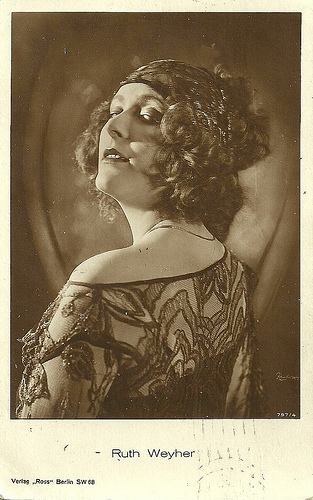
German postcard by Ross Verlag, Berlin, no. 787/4. Photo: Alex Binder.
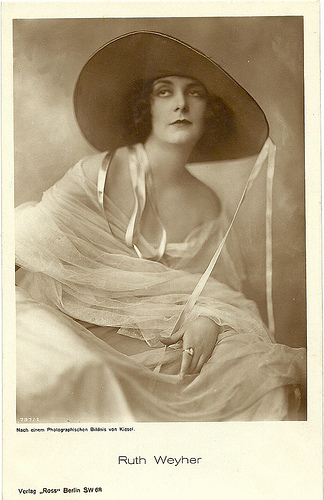
German postcard by Ross Verlag, no. 797/1, 1925-1926. Photo: Kiesel. Collection: Didier Hanson.
French postcard by EC, no. 543. Photo: Publicity still for Die Apachen von Paris/Paname...n'est pas Paris/Apaches of Paris (Nikolai Malikoff, 1927) with Jaque Catelain . Collection: Didier Hanson.
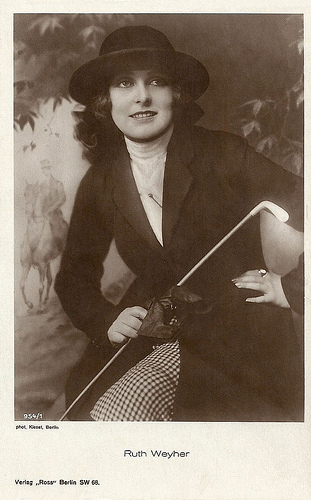
German postcard by Ross Verlag, no. 954/1, 1925-1926. Photo: Kiesel, Berlin.
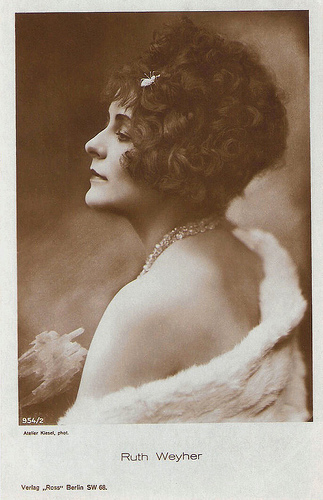
German postcard by Ross Verlag, Berlin, no. 954/2, 1925-1926. Photo: Atelier Kiesel.
Her Own Production Company
Slowly Ruth Weyher moved to leading parts in films such as the title role in the film operetta Die keusche Susanne/The Girl in the Taxi (Richard Eichberg, 1926) which co-starred Willy Fritsch and Lilian Harvey . The cheeky Susanna leads a wild nightlife in Paris, while she plays the chaste woman with her relatives in the countryside.
Other big films of Weyher were Komödie des Herzens/Comedy of the heart (Rochus Gliese, 1924) with Lil Dagover and Nigel Barrie, the William Shakespeare adaptation Ein Sommernachtstraum/A Midsummer Night's Dream (Hans Neuman, 1925), Die Feuertänzerin/The fire dancer (Robert Dinesen, 1925), and Geheimnisse einer Seele/Secrets of a Soul (G.W. Pabst, 1926) – in which she plays the wife of a chemistry professor ( Werner Krauss ) haunted by his dreams of stabbing his wife's cousin, which he eventually also tries to in real life.
James Travers notes at Films de France : "Viewed today, it is much easier to appreciate this film for its artistic merits – its striking visual design and atmospheric expressionistic photography – than its intellectual content. As a serious attempt to represent Freud’s ideas it leaves a great deal to be desired and almost comes across as a mockery of psychoanalytic theory."
At AllMovie , Hal Erickson adds: "The dream sequences - to which Pabst gave credence by hiring two of Freud's assistants as consultants - elaborate upon existing Freudian symbolism to the bursting point. Pabst had always been fascinated by the subconscious; here he seems intoxicated by the subject. Especially effective is Pabst's use of multiple dissolves and superimpositions, all accomplished 'in the camera' without any post-production lab work."
Other titles of Weyher's films are Die Flammen lügen/The flames lie (Carl Froehlich, 1926), Die Hochstaplerin/The Impostor (Martin Berger, 1926), the Swedish-German coproduction Parisiskor/Dr. Monnier und die Frauen/Doctors' Women (Gustav Molander, 1927) with Fred Louis Lerch , and the Carlo Aldini film Einer gegen Alle/One Against All (Nunzio Malasomma, 1927).
In 1928 Weyher founded her own production company Ruth Weyher-Film GmbH, but after only one film, Was ist los mit Nanette/What's the Matter with Nanette? (Holger-Madsen, 1928), with herself in the title role, she quitted producing. Late silent productions were the Italian film La grazia/The grace (Aldo De Benedetti, 1929) with Weyher as femme fatale opposite Carmen Boni , and the French romantic drama L’appassionata/Appassionata (André Liabel, Léon Mathot, 1929) starring Fernand Fabre and Léon Mathot .
Weyher rarely acted in sound films. One example is the Carlo Aldini production Im Kampf mit der Unterwelt/In the battle with the underworld (1930), which he directed and in which he played the lead as well.
In 1932, Ruth Weyher married the Munich based publisher and printing plant owner Hans Geiselberger and according to his wishes she ended her career. She died in Munich in 1983.
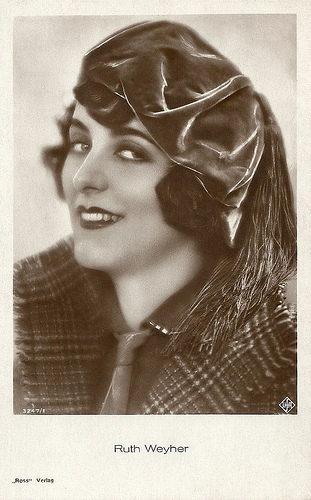
German postcard by Ross Verlag, no. 3247/1, 1928-1929. Photo: Ufa.
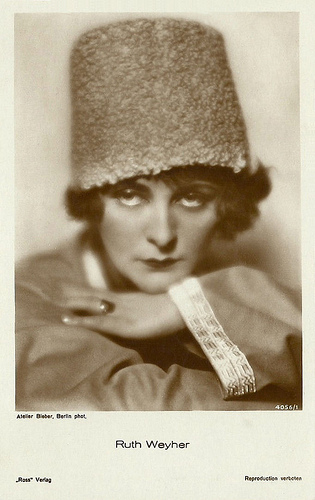
German postcard by Ross Verlag, no. 4056/1, 1929-1930. Photo: Atelier Bieber, Berlin.
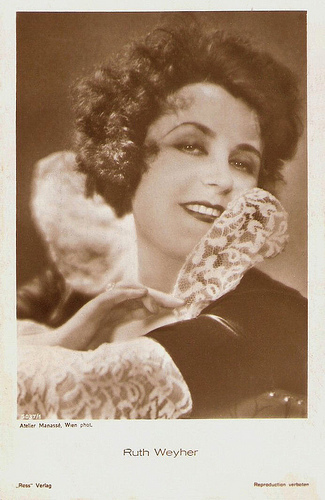
German postcard by Ross Verlag, no. 5037/1, 1930-1931. Photo: Atelier Manassé, Wien (Vienna).
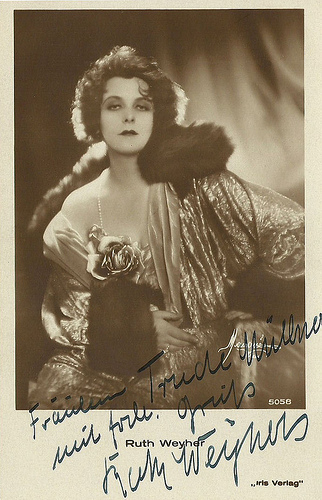
Austrian postcard by Iris Verlag, no. 5058. Photo Manassé, Vienna. Collection: Didier Hanson.
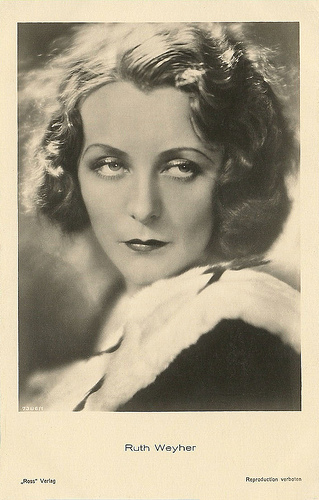
German postcard by Ross Verlag, no. 7306/1, 1932-1933. Collection: Didier Hanson.
Sources: Liam O'Leary (Film Reference), James Travers (Films de France), Thomas Staedeli (Cyranos), Hal Erickson (AllMovie), Dan Pavlides (AllMovie), The Androom Archives, Filmportal.de, Wikipedia (German and English), and
NB Filmportal.de does not indicate Einer gegen Alle as a film with Weyher while IMDb does. Im Kampf mit der Unterwelt ( IMDb ) is not mentioned at all by Filmportal.de .

Austrian postcard by Iris Verlag, no. 5059. Photo: Manassé, Wien.

German postcard by Ross Verlag, no. 3089/1, 1928-1929. Photo: Atelier Kiesel, Berlin.

German postcard by Ross Verlag, no. 3318/1, 1928-1929. Photo: Atelier Kiesel, Berlin.

German postcard by Ross Verlag, Berlin, no. 4032/1, 1929-1930. Photo: Atelier Dührkoop, Berlin.

German postcard by Ross Verlag, Berlin, no. 4056/2, 1929-1930. Photo: Atelier Bieber, Berlin.
The Adventurous Or Passionate Woman
Ruth Ellen Weyher was born in 1901 in Neumark, West Prussia (now Nowinjasta, Poland). She was the daughter of law inspector Paul Ferdinand Weyher and his wife Lätitia Theone Weyher-Schulze. She grew up in Danzig (now Gdansk, Poland), until she moved with her parents and brother to Halle in 1914.
She studied painting at the Kunstgewerbeschule in Halle, but she switched to the conservatory to study singing. Due to a serious illness she lost her singing voice and in 1919 she went to Berlin where she visited the acting school of the Deutsches Theater and was a pupil of Max Reinhardt. In Munich, Weyher had her debut as a stage actress.
Already in 1919 she got her first film roles. In countless entertainment films she played the adventurous or passionate woman, as in Die Wahrsagerin von Paris/The fortune-teller of Paris (Hans Heinz Hartt, 1920), Sterbende Völker/Dying people (Robert Reinert, 1922) with Aud Egede Nissen , Das alte Gesetz/This Ancient Law (Ewald André Dupont, 1923) starring Henny Porten , and the classic Expressionist film Schatten/Warning Shadows (Arthur Robison, 1923).
In Schatten, Weyher played the beautiful wife of a jealous count ( Fritz Kortner ), who suspects her of infidelity. During a banquet, he becomes enraged with his dinner guests when they pretend to kiss his wife's silhouetted shadow. This seemingly innocent romantic indiscretion is met with violent retribution.
Liam O'Leary reviews the film at Film Reference : "Perfect films like this were not without their influence. Much of the innovative camera work and visual style has been absorbed into the accepted techniques of the cinema. But there is a special patina which the pioneer film has that can never be transmitted and that is the excitement generated by an original and creative spirit; Schatten is unique in the history of film, and unlike anything its creator, Arthur Robison, ever attempted again."

German postcard by Ross Verlag, Berlin, no. 787/4. Photo: Alex Binder.

German postcard by Ross Verlag, no. 797/1, 1925-1926. Photo: Kiesel. Collection: Didier Hanson.
French postcard by EC, no. 543. Photo: Publicity still for Die Apachen von Paris/Paname...n'est pas Paris/Apaches of Paris (Nikolai Malikoff, 1927) with Jaque Catelain . Collection: Didier Hanson.

German postcard by Ross Verlag, no. 954/1, 1925-1926. Photo: Kiesel, Berlin.

German postcard by Ross Verlag, Berlin, no. 954/2, 1925-1926. Photo: Atelier Kiesel.
Her Own Production Company
Slowly Ruth Weyher moved to leading parts in films such as the title role in the film operetta Die keusche Susanne/The Girl in the Taxi (Richard Eichberg, 1926) which co-starred Willy Fritsch and Lilian Harvey . The cheeky Susanna leads a wild nightlife in Paris, while she plays the chaste woman with her relatives in the countryside.
Other big films of Weyher were Komödie des Herzens/Comedy of the heart (Rochus Gliese, 1924) with Lil Dagover and Nigel Barrie, the William Shakespeare adaptation Ein Sommernachtstraum/A Midsummer Night's Dream (Hans Neuman, 1925), Die Feuertänzerin/The fire dancer (Robert Dinesen, 1925), and Geheimnisse einer Seele/Secrets of a Soul (G.W. Pabst, 1926) – in which she plays the wife of a chemistry professor ( Werner Krauss ) haunted by his dreams of stabbing his wife's cousin, which he eventually also tries to in real life.
James Travers notes at Films de France : "Viewed today, it is much easier to appreciate this film for its artistic merits – its striking visual design and atmospheric expressionistic photography – than its intellectual content. As a serious attempt to represent Freud’s ideas it leaves a great deal to be desired and almost comes across as a mockery of psychoanalytic theory."
At AllMovie , Hal Erickson adds: "The dream sequences - to which Pabst gave credence by hiring two of Freud's assistants as consultants - elaborate upon existing Freudian symbolism to the bursting point. Pabst had always been fascinated by the subconscious; here he seems intoxicated by the subject. Especially effective is Pabst's use of multiple dissolves and superimpositions, all accomplished 'in the camera' without any post-production lab work."
Other titles of Weyher's films are Die Flammen lügen/The flames lie (Carl Froehlich, 1926), Die Hochstaplerin/The Impostor (Martin Berger, 1926), the Swedish-German coproduction Parisiskor/Dr. Monnier und die Frauen/Doctors' Women (Gustav Molander, 1927) with Fred Louis Lerch , and the Carlo Aldini film Einer gegen Alle/One Against All (Nunzio Malasomma, 1927).
In 1928 Weyher founded her own production company Ruth Weyher-Film GmbH, but after only one film, Was ist los mit Nanette/What's the Matter with Nanette? (Holger-Madsen, 1928), with herself in the title role, she quitted producing. Late silent productions were the Italian film La grazia/The grace (Aldo De Benedetti, 1929) with Weyher as femme fatale opposite Carmen Boni , and the French romantic drama L’appassionata/Appassionata (André Liabel, Léon Mathot, 1929) starring Fernand Fabre and Léon Mathot .
Weyher rarely acted in sound films. One example is the Carlo Aldini production Im Kampf mit der Unterwelt/In the battle with the underworld (1930), which he directed and in which he played the lead as well.
In 1932, Ruth Weyher married the Munich based publisher and printing plant owner Hans Geiselberger and according to his wishes she ended her career. She died in Munich in 1983.

German postcard by Ross Verlag, no. 3247/1, 1928-1929. Photo: Ufa.

German postcard by Ross Verlag, no. 4056/1, 1929-1930. Photo: Atelier Bieber, Berlin.

German postcard by Ross Verlag, no. 5037/1, 1930-1931. Photo: Atelier Manassé, Wien (Vienna).

Austrian postcard by Iris Verlag, no. 5058. Photo Manassé, Vienna. Collection: Didier Hanson.

German postcard by Ross Verlag, no. 7306/1, 1932-1933. Collection: Didier Hanson.
Sources: Liam O'Leary (Film Reference), James Travers (Films de France), Thomas Staedeli (Cyranos), Hal Erickson (AllMovie), Dan Pavlides (AllMovie), The Androom Archives, Filmportal.de, Wikipedia (German and English), and
NB Filmportal.de does not indicate Einer gegen Alle as a film with Weyher while IMDb does. Im Kampf mit der Unterwelt ( IMDb ) is not mentioned at all by Filmportal.de .
Published on February 19, 2018 22:00
February 18, 2018
Fita Benkhoff
German actress Fita Benkhoff (1901-1967) appeared in more than 100 films between 1933 and 1967. The vivacious, blonde actress specialised in supporting parts, often as the best friend, aunt or mother of the leading actress. Together with Grethe Weiser, she was seen as the main female comic sidekick of the German film, the equivalent of a German Eve Arden.

German postcard by Ross Verlag, no. A 3306/1, 1941-1944. Photo: Tobis / Tita Binz.

German postcard by Film-Foto-Verlag, no. A 3453/1, 1941-1944. Photo: Tobis / Tita Binz.
An effervescent, perpetually wisecracking scene stealer
Frieda Elfriede ‘Fita’ Benkhoff was born in 1901 in Dortmund, Germany. She was the seventh of eight children by Christian Alex Gustav Benkhoff and his wife Maria Bernardine Marcus. Her parents managed the Walhalla, one of the biggest entertainment halls in Dortmund.
Fita worked as a dentist assistant and a telephone operator, but secretly she attended acting classes by Emil Bender. In 1924, she became a volunteer at the Stadtheater Dortmund and made her stage debut in Don Carlos. Several roles followed before she moved to theatres in Lübeck, Düsseldorf, Breslau and Wien.
She started her film career in 1933 with a part in Der streitbare Herr Kickel/The belligerent Mr. Kickel (Georg Jacoby, 1933) with Jacob Tiedtke. In 1934, she appeared in the popular film comedy Charleys Tante/Charley's Aunt (Robert A. Stemmle, 1934) starring Fritz Rasp and Paul Kemp . Other supporting parts she played in such comedies as Heinz im Mond/Heinz in the Moon (Robert A. Stemmle, 1934) starring Heinz Rühmann , and Krach um Jolanthe/Trouble with Jolanthe (Carl Froelich, 1934) featuring Marianne Hoppe.
A bigger role followed in the German musical Amphitryon (1935). Written and directed by Reinhold Schünzel , it is based on plays by Molière, Plautus, and Heinrich von Kleist, which in turn are based on Greek mythology. She established such a popular rapport with Paul Kemp in this comedy, that she was cast opposite him in further popular outings, including Boccaccio (Herbert Maisch, 1936), and, for once co-starring, in Der schüchterne Casanova/The Bashful Casanova (Karel Lamac, 1936).
In the comedy Lauter Lügen/All Lies (1938), she co-starred with Albert Matterstock , and Hertha Feiler . It was the directorial debut of Heinz Rühmann . At IMDb , I.S. Mowis writes: “Even though she rarely commanded a leading role, she was an effervescent, perpetually wisecracking scene stealer, who invariably had the last word, whether as friend of the heroine, gossipy aunt or nosy parker.” She played another of her few leading roles in the historical comedy Schneider Wibbel/Wibbel the Tailor (Viktor de Kowa, 1939) opposite Erich Ponto.

German postcard by Film-Foto-Verlag, no. A 3566/1, 1941-1944. Photo: Baumann.
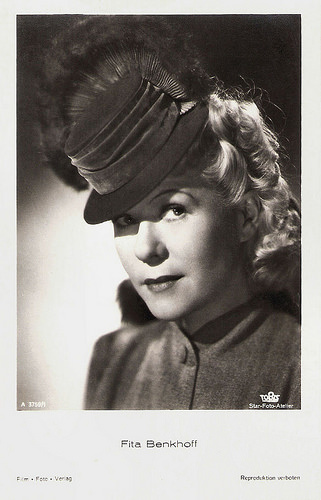
German postcard by Film-Foto-Verlag, no. A 3759/1, 1941-1944. Photo: Tobis / Star-Foto-Atelier.

German postcard by Film-Foto-Verlag, no. A 3882/1, 1941-1944. Photo: Tobis / Star-Foto-Atelier.
Completely retired from public life
Fita Benkhoff had another leading role next to Karl Schönböck in the comedy Ich hab’ von dir geträumt/I’ve dreamed of you (Wolfgang Staudte, 1944). Besides her film work, she played roles at the Volksbühne Berlin and at the Deutschen Theater. Here she portrayed Klara in Friedrich Hebbel’s Maria Magdalena which became her greatest stage success.
After the Second World War, she moved to Hamburg, where she performed at the Schauspielhaus. She also found new film roles. In 1949 she played Mother Wolff in the DEFA-production Der Biberpelz/The Beaver Coat (Erich Engel, 1949), an adaptation of Gerhart Hauptmann's play The Beaver Coat.
She soon returned to the comic genre and played a leading role in Drei Mädels vom Rhein/Three Girls from the Rhine (Georg Jacoby, 1955). Her other films include Pension Schöller (Georg Jacoby, 1952), Wenn abends die Heide träumt/When the Heath Dreams at Night (Paul Martin, 1952), Auf der Reeperbahn nachts um halb eins/On the Reeperbahn at Half Past Midnight (Wolfgang Liebeneiner, 1954) with Hans Albers, Raub der Sabinerinnen/The Abduction of the Sabine Women (Kurt Hoffmann, 1954) and Wenn der Vater mit dem Sohne/As the father with the son (Hans Quest, 1955) starring Heinz Rühmann .
Besides her film work, she continued to appear in the theatre, such as in Berlin at the Hebbel-Theater. After the death of her husband, the merchant Wilhelm Strom in 1957 she completely retired from public life. She lived in her house in München and started to paint. In 1967, she played a last role on stage in the black comedy Arsenic and Old Lace.
Fita Benkhoff died in Munich, West-Germany in 1967 at the age of 65.
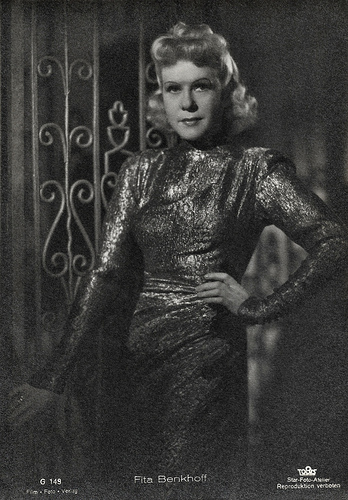
German postcard by Film-Foto-Verlag, no. G 148, 1941-1944. Photo: Tobis / Star-Foto-Atelier.
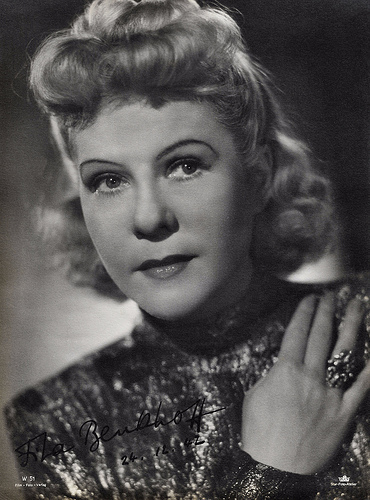
Big German card by Film-Foto-Verlag, no. W 51, 1941-1944. Photo: Tobis / Star-Foto-Atelier.
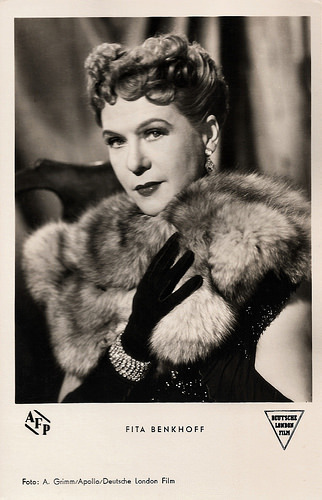
German postcard by Kunst und Bild, no. A 731. Photo: A. Grimm / Apollo / Deutsche London Film. Publicity still for Von Liebe reden wir später/We'll talk about love later (Karl Anton, 1953).
Sources: (IMDb), Wikipedia (German and English) and .

German postcard by Ross Verlag, no. A 3306/1, 1941-1944. Photo: Tobis / Tita Binz.

German postcard by Film-Foto-Verlag, no. A 3453/1, 1941-1944. Photo: Tobis / Tita Binz.
An effervescent, perpetually wisecracking scene stealer
Frieda Elfriede ‘Fita’ Benkhoff was born in 1901 in Dortmund, Germany. She was the seventh of eight children by Christian Alex Gustav Benkhoff and his wife Maria Bernardine Marcus. Her parents managed the Walhalla, one of the biggest entertainment halls in Dortmund.
Fita worked as a dentist assistant and a telephone operator, but secretly she attended acting classes by Emil Bender. In 1924, she became a volunteer at the Stadtheater Dortmund and made her stage debut in Don Carlos. Several roles followed before she moved to theatres in Lübeck, Düsseldorf, Breslau and Wien.
She started her film career in 1933 with a part in Der streitbare Herr Kickel/The belligerent Mr. Kickel (Georg Jacoby, 1933) with Jacob Tiedtke. In 1934, she appeared in the popular film comedy Charleys Tante/Charley's Aunt (Robert A. Stemmle, 1934) starring Fritz Rasp and Paul Kemp . Other supporting parts she played in such comedies as Heinz im Mond/Heinz in the Moon (Robert A. Stemmle, 1934) starring Heinz Rühmann , and Krach um Jolanthe/Trouble with Jolanthe (Carl Froelich, 1934) featuring Marianne Hoppe.
A bigger role followed in the German musical Amphitryon (1935). Written and directed by Reinhold Schünzel , it is based on plays by Molière, Plautus, and Heinrich von Kleist, which in turn are based on Greek mythology. She established such a popular rapport with Paul Kemp in this comedy, that she was cast opposite him in further popular outings, including Boccaccio (Herbert Maisch, 1936), and, for once co-starring, in Der schüchterne Casanova/The Bashful Casanova (Karel Lamac, 1936).
In the comedy Lauter Lügen/All Lies (1938), she co-starred with Albert Matterstock , and Hertha Feiler . It was the directorial debut of Heinz Rühmann . At IMDb , I.S. Mowis writes: “Even though she rarely commanded a leading role, she was an effervescent, perpetually wisecracking scene stealer, who invariably had the last word, whether as friend of the heroine, gossipy aunt or nosy parker.” She played another of her few leading roles in the historical comedy Schneider Wibbel/Wibbel the Tailor (Viktor de Kowa, 1939) opposite Erich Ponto.

German postcard by Film-Foto-Verlag, no. A 3566/1, 1941-1944. Photo: Baumann.

German postcard by Film-Foto-Verlag, no. A 3759/1, 1941-1944. Photo: Tobis / Star-Foto-Atelier.

German postcard by Film-Foto-Verlag, no. A 3882/1, 1941-1944. Photo: Tobis / Star-Foto-Atelier.
Completely retired from public life
Fita Benkhoff had another leading role next to Karl Schönböck in the comedy Ich hab’ von dir geträumt/I’ve dreamed of you (Wolfgang Staudte, 1944). Besides her film work, she played roles at the Volksbühne Berlin and at the Deutschen Theater. Here she portrayed Klara in Friedrich Hebbel’s Maria Magdalena which became her greatest stage success.
After the Second World War, she moved to Hamburg, where she performed at the Schauspielhaus. She also found new film roles. In 1949 she played Mother Wolff in the DEFA-production Der Biberpelz/The Beaver Coat (Erich Engel, 1949), an adaptation of Gerhart Hauptmann's play The Beaver Coat.
She soon returned to the comic genre and played a leading role in Drei Mädels vom Rhein/Three Girls from the Rhine (Georg Jacoby, 1955). Her other films include Pension Schöller (Georg Jacoby, 1952), Wenn abends die Heide träumt/When the Heath Dreams at Night (Paul Martin, 1952), Auf der Reeperbahn nachts um halb eins/On the Reeperbahn at Half Past Midnight (Wolfgang Liebeneiner, 1954) with Hans Albers, Raub der Sabinerinnen/The Abduction of the Sabine Women (Kurt Hoffmann, 1954) and Wenn der Vater mit dem Sohne/As the father with the son (Hans Quest, 1955) starring Heinz Rühmann .
Besides her film work, she continued to appear in the theatre, such as in Berlin at the Hebbel-Theater. After the death of her husband, the merchant Wilhelm Strom in 1957 she completely retired from public life. She lived in her house in München and started to paint. In 1967, she played a last role on stage in the black comedy Arsenic and Old Lace.
Fita Benkhoff died in Munich, West-Germany in 1967 at the age of 65.

German postcard by Film-Foto-Verlag, no. G 148, 1941-1944. Photo: Tobis / Star-Foto-Atelier.

Big German card by Film-Foto-Verlag, no. W 51, 1941-1944. Photo: Tobis / Star-Foto-Atelier.

German postcard by Kunst und Bild, no. A 731. Photo: A. Grimm / Apollo / Deutsche London Film. Publicity still for Von Liebe reden wir später/We'll talk about love later (Karl Anton, 1953).
Sources: (IMDb), Wikipedia (German and English) and .
Published on February 18, 2018 22:00
February 17, 2018
David Tomlinson
British actor David Tomlinson (1917-2000) was both a leading man, a character actor and a comedian. He is best remembered for his roles in the Walt Disney successes Mary Poppins (1964) as authority figure George Banks, The Love Bug (1968) as hapless antagonist Peter Thorndyke, and Bedknobs and Broomsticks (1971) as fraudulent magician Professor Emelius Browne.
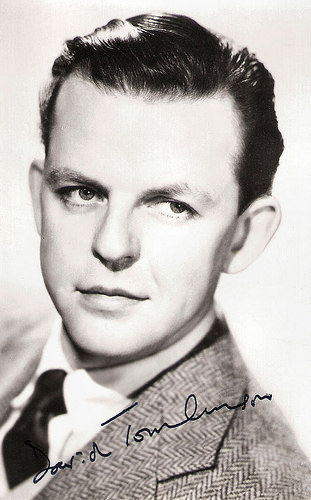
British autograph card.
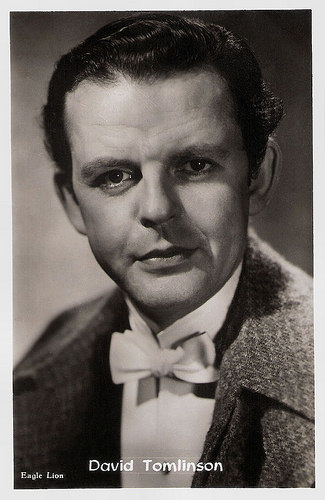
Dutch autograph card. Photo": Eagle Lion.
Murder-suicide
David Cecil MacAlister Tomlinson was born in Henley-on-Thames, Oxfordshire in 1917, to Florence Elizabeth Tomlinson (née Sinclair-Thomsona) and Clarence Samuel Tomlinson. His well-respected London solicitor father had an uncertain temper, who once burned his baby son's hand with a domestic iron and who, for years, ran a second, secret household in London from Mondays to Fridays, returning to his wife and children in Folkstone at weekends.
David attended Tonbridge School and left to join the Grenadier Guards for 16 months. His father then secured him a job as a clerk at Shell Mex House.
His stage career grew from amateur stage productions to his film debut in Quiet Wedding (Anthony Asquith, 1941), as Margaret Lockwood 's brother John, hopelessly in love with Peggy Ashcroft.
It was followed by roles in the comedy My Wife's Family (Walter C. Mycroft, 1941), and the British anti-Nazi thriller "Pimpernel" Smith (1941), produced and directed by its star Leslie Howard , which updates his role in the 1934 The Scarlet Pimpernel from Revolutionary France to pre-Second World War Europe. It was the third most popular film at the British box office in 1941.
Tomlinson’s career was interrupted when he entered Second World War service as a Flight Lieutenant in the RAF. During the war, he served as a flight instructor in Canada and made three films. His flying days continued after the war and later, in 1957, he crashed a Tiger Moth plane near his back garden after he lost consciousness while flying.
Tomlinson was first married to Mary Lindsay Hiddingh, daughter of L. Seton Lindsay, the vice president of the New York Life Insurance Company. She had been widowed in 1941 when her husband, Major A.G. Hiddingh, was killed in action, leaving her to care for their two young sons. Tomlinson married Mary in September 1943. On 2 December 1943, Hiddingh killed herself and her two sons in a murder-suicide by jumping from a hotel in New York City. She was 34 and her sons Michael 8 and John 6. She had been suffering from depression by the loss of her first husband. She was hoping to join David in England, but while in New York City soon learned she couldn't bring the kids which led to her murder-suicide.
Tomlinson's second wife was actress Audrey Freeman, whom he married in 1953, and the couple remained together for 47 years until his death. They had four sons: David Jr. (born 1954), William (1959), Henry (1963) and James (1956 ?).
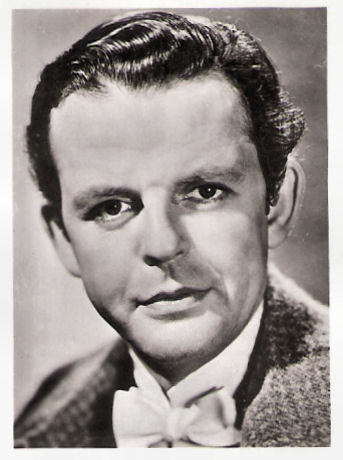
Small German Collectors card by Greiling in the Filmstars der Welt Series, 2. Band, Serie E, no. 107. Photo: Rank.
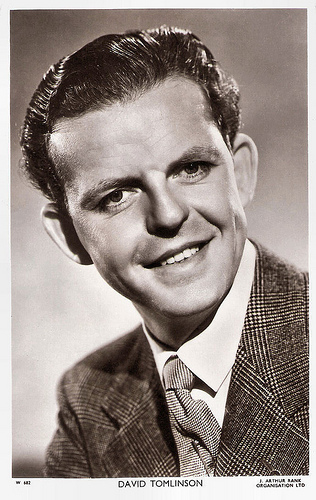
British postcard in the Picturegoer Series, London, no. W 682. Photo: J. Arthur Rank Organisation.
Disney Legend
After the war, David Tomlinson played supporting parts in British films like the war drama The Way to the Stars (Anthony Asquith, 1945), starring Michael Redgrave and John Mills , School for Secrets (Peter Ustinov, 1946) starring Ralph Richardson , and the drama Fame is the Spur (Roy Boulting, 1947) with Michael Redgrave and Rosamund John .
A hit was the comedy Miranda (Ken Annakin, 1948) about a beautiful and playful mermaid played by Glynis Johns . Another success was the war film The Wooden Horse (Jack Lee, 1950) in which he co-starred with Leo Genn and Anthony Steel .
Other popular films in which he co-starred were the comedy Three Men in a Boat (Ken Annakin, 1956) with Laurence Harvey , and Shirley Eaton , the comedy Up the Creek (Val Guest, 1958) with Peter Sellers and Wilfrid Hyde-White, and the adventure-comedy Tom Jones (Tony Richardson, 1963) starring Albert Finney .
Hal Erickson at AllMovie : “Tomlinson liked nothing better than to undercut his dignified demeanor in flustered comedy roles, invariably sputtering such expletives as 'My word!', 'I say!', and 'What the deuce!'"
Tomlinson did this exceptionally well in his role as George Banks, head of the Banks family, in Mary Poppins (Robert Stevenson, 1964), alongside the umbrella-borne Julie Andrews and the chimney-sweeping Dick Van Dyke. The Disney film was released to universal acclaim, receiving a total of thirteen Academy Award nominations, including Best Picture – an unsurpassed record for any other film released by Walt Disney Studios – and won five.
Mary Poppins brought Tomlinson continued work with Disney, asking him to appear in The Love Bug (Robert Stevenson, 1968) and Bedknobs and Broomsticks (Robert Stevenson, 1971), with Angela Lansbury .
Throughout the rest of Tomlinson's film career, he never steered far from comedies. On stage he had long-running successes in many plays including The Little Hut with Robert Morley and Roger Moore as his understudy. His final acting appearance was in The Fiendish Plot of Dr. Fu Manchu (Piers Haggard, Peter Sellers, Richard Quine, 1980), which was also the final film of Peter Sellers , who died shortly prior to its release.
Tomlinson retired from acting at age 63 to spend more time with his family. During the last few years of his life, he became notorious around his home village of Mursley for flying very low in his Tiger Moth. In 2000, David Tomlinson died peacefully in his sleep at King Edward VII's Hospital, Westminster, after suffering from a sudden stroke. He was 83 years old. He was interred at his estate grounds in Mursley, Buckinghamshire. In 2002, two years after his death, Tomlinson was posthumously inducted as a Disney Legend.
Trailer Mary Poppins (1964). Source: Film Trailers Channel (YouTube).
Sources: Hal Erickson (AllMovie), Dennis Barker (The Guardian), (IMDb), Wikipedia, and .

British autograph card.

Dutch autograph card. Photo": Eagle Lion.
Murder-suicide
David Cecil MacAlister Tomlinson was born in Henley-on-Thames, Oxfordshire in 1917, to Florence Elizabeth Tomlinson (née Sinclair-Thomsona) and Clarence Samuel Tomlinson. His well-respected London solicitor father had an uncertain temper, who once burned his baby son's hand with a domestic iron and who, for years, ran a second, secret household in London from Mondays to Fridays, returning to his wife and children in Folkstone at weekends.
David attended Tonbridge School and left to join the Grenadier Guards for 16 months. His father then secured him a job as a clerk at Shell Mex House.
His stage career grew from amateur stage productions to his film debut in Quiet Wedding (Anthony Asquith, 1941), as Margaret Lockwood 's brother John, hopelessly in love with Peggy Ashcroft.
It was followed by roles in the comedy My Wife's Family (Walter C. Mycroft, 1941), and the British anti-Nazi thriller "Pimpernel" Smith (1941), produced and directed by its star Leslie Howard , which updates his role in the 1934 The Scarlet Pimpernel from Revolutionary France to pre-Second World War Europe. It was the third most popular film at the British box office in 1941.
Tomlinson’s career was interrupted when he entered Second World War service as a Flight Lieutenant in the RAF. During the war, he served as a flight instructor in Canada and made three films. His flying days continued after the war and later, in 1957, he crashed a Tiger Moth plane near his back garden after he lost consciousness while flying.
Tomlinson was first married to Mary Lindsay Hiddingh, daughter of L. Seton Lindsay, the vice president of the New York Life Insurance Company. She had been widowed in 1941 when her husband, Major A.G. Hiddingh, was killed in action, leaving her to care for their two young sons. Tomlinson married Mary in September 1943. On 2 December 1943, Hiddingh killed herself and her two sons in a murder-suicide by jumping from a hotel in New York City. She was 34 and her sons Michael 8 and John 6. She had been suffering from depression by the loss of her first husband. She was hoping to join David in England, but while in New York City soon learned she couldn't bring the kids which led to her murder-suicide.
Tomlinson's second wife was actress Audrey Freeman, whom he married in 1953, and the couple remained together for 47 years until his death. They had four sons: David Jr. (born 1954), William (1959), Henry (1963) and James (1956 ?).

Small German Collectors card by Greiling in the Filmstars der Welt Series, 2. Band, Serie E, no. 107. Photo: Rank.

British postcard in the Picturegoer Series, London, no. W 682. Photo: J. Arthur Rank Organisation.
Disney Legend
After the war, David Tomlinson played supporting parts in British films like the war drama The Way to the Stars (Anthony Asquith, 1945), starring Michael Redgrave and John Mills , School for Secrets (Peter Ustinov, 1946) starring Ralph Richardson , and the drama Fame is the Spur (Roy Boulting, 1947) with Michael Redgrave and Rosamund John .
A hit was the comedy Miranda (Ken Annakin, 1948) about a beautiful and playful mermaid played by Glynis Johns . Another success was the war film The Wooden Horse (Jack Lee, 1950) in which he co-starred with Leo Genn and Anthony Steel .
Other popular films in which he co-starred were the comedy Three Men in a Boat (Ken Annakin, 1956) with Laurence Harvey , and Shirley Eaton , the comedy Up the Creek (Val Guest, 1958) with Peter Sellers and Wilfrid Hyde-White, and the adventure-comedy Tom Jones (Tony Richardson, 1963) starring Albert Finney .
Hal Erickson at AllMovie : “Tomlinson liked nothing better than to undercut his dignified demeanor in flustered comedy roles, invariably sputtering such expletives as 'My word!', 'I say!', and 'What the deuce!'"
Tomlinson did this exceptionally well in his role as George Banks, head of the Banks family, in Mary Poppins (Robert Stevenson, 1964), alongside the umbrella-borne Julie Andrews and the chimney-sweeping Dick Van Dyke. The Disney film was released to universal acclaim, receiving a total of thirteen Academy Award nominations, including Best Picture – an unsurpassed record for any other film released by Walt Disney Studios – and won five.
Mary Poppins brought Tomlinson continued work with Disney, asking him to appear in The Love Bug (Robert Stevenson, 1968) and Bedknobs and Broomsticks (Robert Stevenson, 1971), with Angela Lansbury .
Throughout the rest of Tomlinson's film career, he never steered far from comedies. On stage he had long-running successes in many plays including The Little Hut with Robert Morley and Roger Moore as his understudy. His final acting appearance was in The Fiendish Plot of Dr. Fu Manchu (Piers Haggard, Peter Sellers, Richard Quine, 1980), which was also the final film of Peter Sellers , who died shortly prior to its release.
Tomlinson retired from acting at age 63 to spend more time with his family. During the last few years of his life, he became notorious around his home village of Mursley for flying very low in his Tiger Moth. In 2000, David Tomlinson died peacefully in his sleep at King Edward VII's Hospital, Westminster, after suffering from a sudden stroke. He was 83 years old. He was interred at his estate grounds in Mursley, Buckinghamshire. In 2002, two years after his death, Tomlinson was posthumously inducted as a Disney Legend.
Trailer Mary Poppins (1964). Source: Film Trailers Channel (YouTube).
Sources: Hal Erickson (AllMovie), Dennis Barker (The Guardian), (IMDb), Wikipedia, and .
Published on February 17, 2018 22:00
February 16, 2018
Eidelsan
Today a post on the German film star postcards, produced during the late 1920s as promotion for 'Die trustfreie Eidelsan'. Margarine label Eidelsan was produced by Margarinewerk Eidelstedt of the Gebr. Fauser G.m.b.H. in Holstein. Hermann Fauser was a son of an agricultural administrator in the sugar beet and the wine growing industry and an independent broker for the oilseed industry. In 1926 he became the active partner of the four years previously founded margarine plant Eidelstedt in Hamburg. Only a few years later, he joined the company's management and was involved in the production of innovative new products for the firm that still exists and is now known as Vitaquell. The postcards in this post are all of the first film star series for Eidelsan, which consists of 80 cards. Was there a second series?
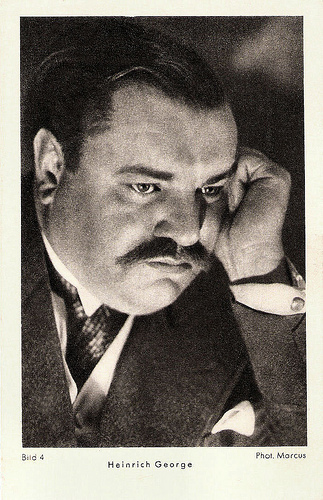
Heinrich George . German postcard by Margarinewerk Eidelstedt Gebr. Fauser G.m.b.H., Holstein, Serie 1, no. Bild 4. Photo: Marcus.
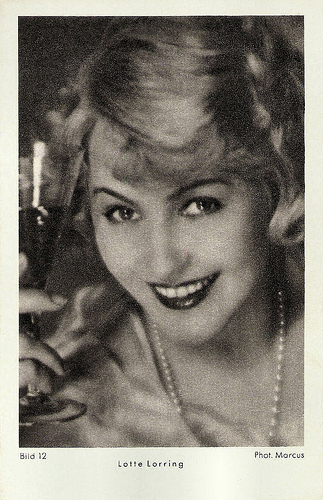
Lotte Lorring . German postcard by Margarinewerk Eidelstedt Gebr. Fauser GmbH, Holstein. Serie 1, no. Bild 12. Photo: Marcus.
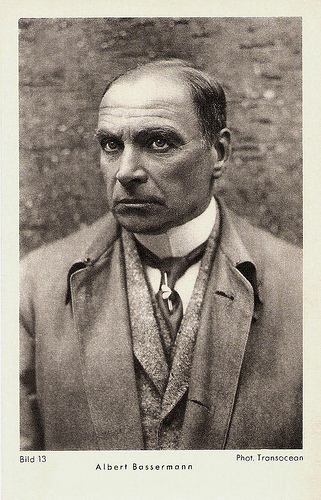
Albert Bassermann . German postcard by Margarinewerk Eidelstedt Gebr. Fauser G.m.b.H., Holstein, Serie 1, no. Bild 13. Photo: Transocean.
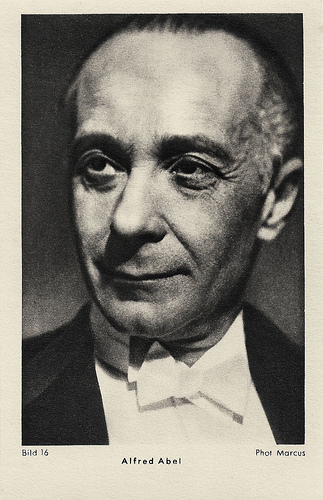
Alfred Abel . German postcard by Margarinewerk Eidelstedt Gebr. Fauser G.m.b.H., Holstein, Serie 1, no. Bild 16. Photo: Marcus.
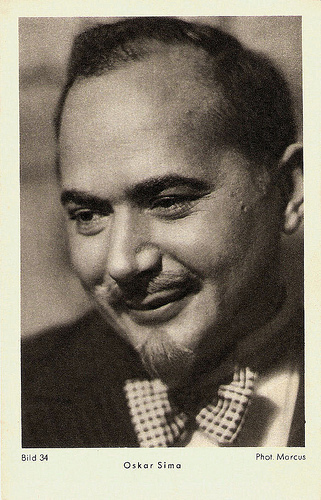
Oskar Sima . German postcard by Margarinewerk Eidelstedt Gebr. Fauser G.m.b.H., Holstein, Serie 1, no. Bild 34. Photo: Marcus.
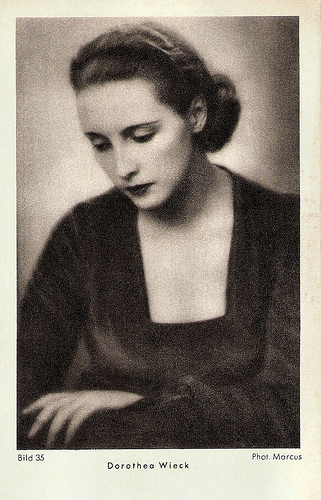
Dorothea Wieck . German postcard by Margarinewerk Eidelstedt Gebr. Fauser GmbH, Holstein. Serie 1, no. Bild 35. Photo: Marcus.
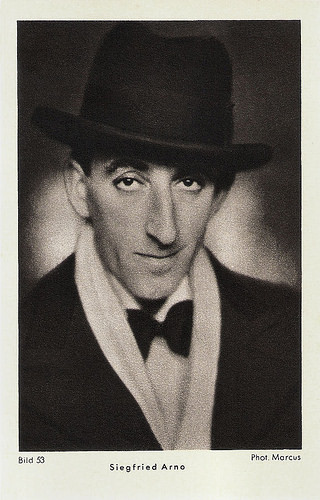
Siegfried Arno . German postcard by Margarinewerk Eidelstedt Gebr. Fauser G.m.b.H., Holstein, Serie 1, no. Bild 53. Photo: Marcus.
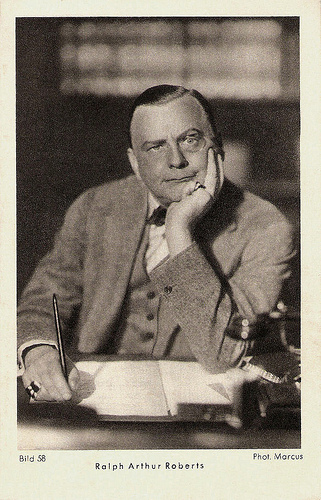
Ralph Arthur Roberts . German postcard by Margarinewerk Eidelstedt Gebr. Fauser GmbH, Holstein. Serie 1, no. Bild 58. Photo: Marcus.
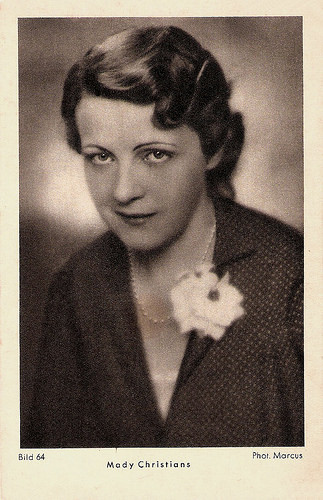
Mady Christians. German postcard by Margarinewerk Eidelstedt Gebr. Fauser GmbH, Holstein. Serie 1, no. Bild 64. Photo: Marcus.
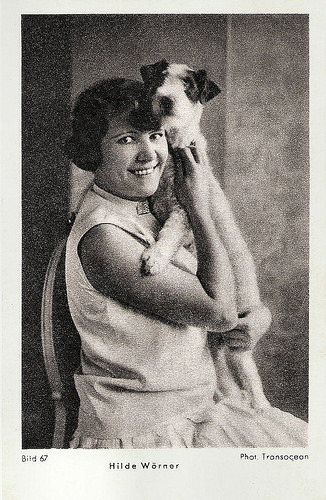
Hilde Wörner . German postcard by Margarinewerk Eidelstedt Gebr. Fauser G.m.b.H., Holstein, Serie 1, no. Bild 67. Photo: Transocean.
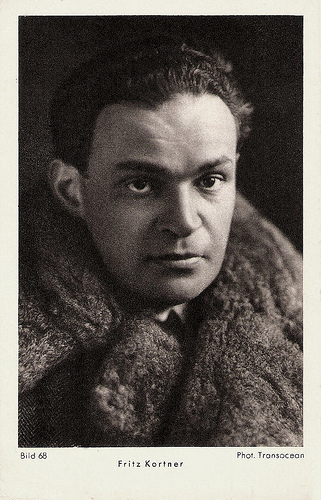
Fritz Kortner . German postcard by Margarinewerk Eidelstedt Gebr. Fauser G.m.b.H., Holstein, Serie 1, no. Bild 68. Photo: Transocean.
Source: Vitaquell (German).

Heinrich George . German postcard by Margarinewerk Eidelstedt Gebr. Fauser G.m.b.H., Holstein, Serie 1, no. Bild 4. Photo: Marcus.

Lotte Lorring . German postcard by Margarinewerk Eidelstedt Gebr. Fauser GmbH, Holstein. Serie 1, no. Bild 12. Photo: Marcus.

Albert Bassermann . German postcard by Margarinewerk Eidelstedt Gebr. Fauser G.m.b.H., Holstein, Serie 1, no. Bild 13. Photo: Transocean.

Alfred Abel . German postcard by Margarinewerk Eidelstedt Gebr. Fauser G.m.b.H., Holstein, Serie 1, no. Bild 16. Photo: Marcus.

Oskar Sima . German postcard by Margarinewerk Eidelstedt Gebr. Fauser G.m.b.H., Holstein, Serie 1, no. Bild 34. Photo: Marcus.

Dorothea Wieck . German postcard by Margarinewerk Eidelstedt Gebr. Fauser GmbH, Holstein. Serie 1, no. Bild 35. Photo: Marcus.

Siegfried Arno . German postcard by Margarinewerk Eidelstedt Gebr. Fauser G.m.b.H., Holstein, Serie 1, no. Bild 53. Photo: Marcus.

Ralph Arthur Roberts . German postcard by Margarinewerk Eidelstedt Gebr. Fauser GmbH, Holstein. Serie 1, no. Bild 58. Photo: Marcus.

Mady Christians. German postcard by Margarinewerk Eidelstedt Gebr. Fauser GmbH, Holstein. Serie 1, no. Bild 64. Photo: Marcus.

Hilde Wörner . German postcard by Margarinewerk Eidelstedt Gebr. Fauser G.m.b.H., Holstein, Serie 1, no. Bild 67. Photo: Transocean.

Fritz Kortner . German postcard by Margarinewerk Eidelstedt Gebr. Fauser G.m.b.H., Holstein, Serie 1, no. Bild 68. Photo: Transocean.
Source: Vitaquell (German).
Published on February 16, 2018 22:00
February 15, 2018
Fritz Kortner
Austrian-born stage and film actor and theatre director Fritz Kortner (1892–1970) was one of the best known character actors of the German silent cinema. His speciality was playing sinister and threatening roles.
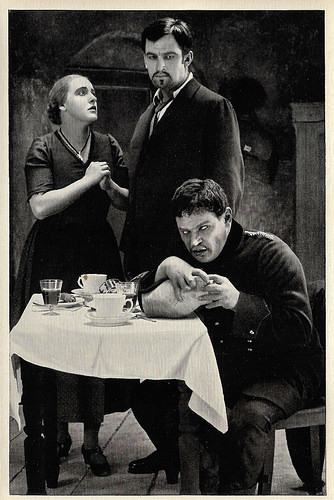
German collectors card by Ross Verlag in the series Vom Werden deutscher Filmkunst - Der Stumme Film, picture no. 102. Photo: Ufa. Publicity still for Hintertreppe/Backstairs (Leopold Jessner, Paul Leni, 1921) with Henny Porten and Wilhelm Dieterle .
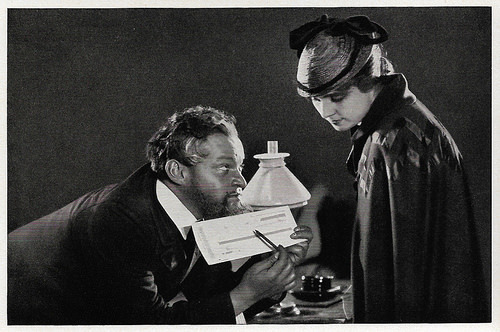
German collectors card by Ross Verlag in the series Vom Werden deutscher Filmkunst - Der Stumme Film, picture no. 99, group 43. Photo: Ufa. Publicity still for Nora (Berthold Viertel, 1923) with Olga Tschechova .
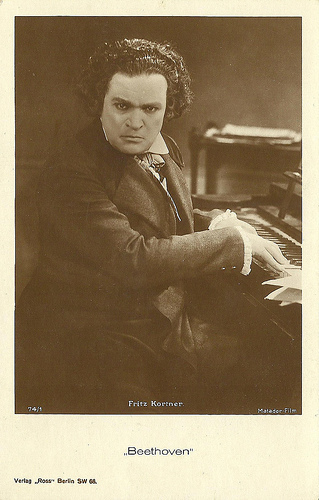
German postcard by Ross Verlag, Berlin, no. 74/1, 1925-1935. Photo: Matador-Film. Publicity still for Das Leben des Beethoven/The Life of the Beethoven (Hans Otto, 1927).
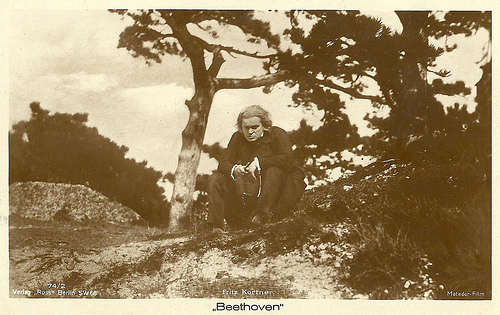
German postcard by Ross Verlag, Berlin, no. 74/2, 1925-1935. Photo: Matador-Film. Publicity still for Das Leben des Beethoven/The Life of the Beethoven (Hans Otto, 1927). Collection: Didier Hanson.

Italian postcard, no. 341. Photo: Dist. S.A. Pittaluga. Francesca Bertini and Fritz Kortner in Mein Leben für das Deine/My life for yours (Luitz-Morat, 1928), an adaptation of the play Odette by Victorien Sardou.
Unfit for the Front
Fritz Kortner was born as Fritz Nathan Kohn in Vienna, Austria, in 1892.
He studied at the Vienna Academy of Music and Dramatic Art, an academy at the Burgtheater. After graduating, he received his first engagement at the National Theatre Mannheim. In 1911, he joined Max Reinhardt at the Deutsches Theater in Berlin. There he played only minor roles, and soon he moved again.
These were wander years for the actor, hopping from stage to stage. At the outbreak of the First World War, he was called up for military service. However, he was soon written off as unfit for the front.
In 1915 he made his first film appearances in a series of adventure films directed and produced by Harry Piel , including Manya, die Türkin/Manya, the Turkish Woman (Harry Piel, 1915). During the war he also appeared in such films as Der Märtyrer seines/The Martyr of his heart (Emil Justitz, 1918) as Ludwig von Beethoven, Der Sonnwendhof/The Sonnwendhof (Emil Leyde, 1918) and Frauenehre/Honour of a woman (Georg Kundert, 1918), in which his expressionistic acting style first came into its own.
On stage his roles became more important, and in 1919 he had his breakthrough with his performance in the play Die Wandlung (the conversion) by Ernst Toller at Die Tribüne in Berlin. Then director Leopold Jessner committed him for the Staatstheater and made him one of his principal actors. Kortner appeared in many plays by Schiller, Büchner and Shakespeare under the direction of Jessner.
His Shylock in The Merchant of Venice became his most famous role. It made him one of the great stars of the German stage in the 1920s, with a new form of theater: the expressionism. His specialty was playing sinister and threatening roles.
He also intensified his activities in the cinema, where he also excelled in expressionist works with his demonically subtle acting, such as in Satanas/Satan (F.W. Murnau, 1920) opposite Ernst Hoffmann , Die Nacht der Königin Isabeau/The Night of Queen Isabeau (Robert Wiene, 1920) starring Fern Andra , and the thriller Schatten/Warning Shadows (Arthur Robison, 1923) with Alexander Granach.
Another early classic was the drama Hintertreppe/Backstairs (Leopold Jessner, Paul Leni, 1921) in which he played a crippled mailman in love with a maid ( Henny Porten ) who lives in the same poor apartment building.
In 1924 Kortner married the actress Johanna Hofer, and they stayed together till his death. That year he played the role of the villain in the Austrian silent horror classic Orlacs Hände/Orlac’s hands (Robert Wiene, 1924) opposite Conrad Veidt .
He proved his versatility with completely different parts in two other classics, as Dr. Ludwig Schön in Die Büchse der Pandora/Pandora’s Box (Georg Wilhelm Pabst, 1929) featuring Louise Brooks , and the title role in the early sound film Dreyfus/The Dreyfus Case (Richard Oswald, 1930) with Heinrich George .
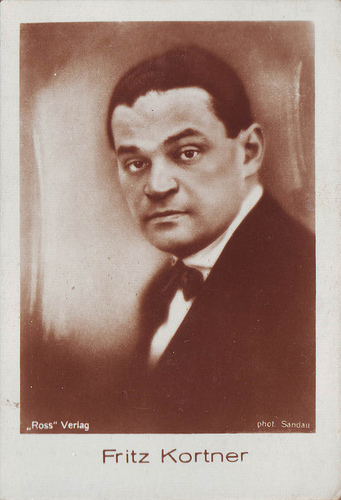
Postcard by Ross Verlag. Photo: Sandau. Collection: Performing Arts@Flickr.
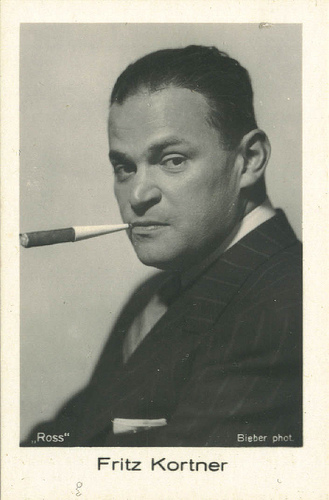
Postcard by Ross Verlag. Photo: Bieber. Collection: Performing Arts@Flickr.
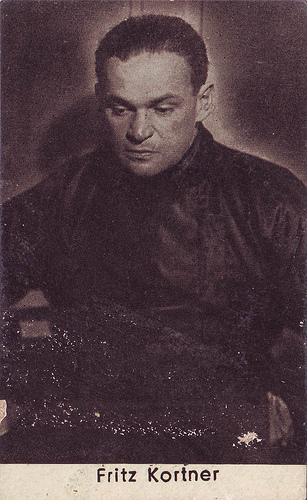
Postcard. Collection: Performing Arts@Flickr.
The Attack
During the turbulent times in the early 1930s, the Jewish Fritz Kortner decided to install his residence in Ascona. In late 1932 he was attacked in the Nazi propaganda sheet Der Angriff (The Attack): "One had chosen for the role in Gott, Kaiser und Bauer (1932, God, Emperor and Farmer) the Jew Kortner-Kohn, who actually should have stopped playing in the Berlin theatre scene long ago. He is pretty much the worst and grubbiest type who has ever been on a German stage.”
When Adolf Hitler came to power in 1933, Kortner, was on a tour through Scandinavia and Eastern Europe. He decided not to return to Germany. Over Czechoslovakia, then to Vienna - where he performed at Max Reinhardt’s Theater in der Josefstadt – to Paris, the Kortner family then emigrated to Great Britain, where Fritz Kortner could appear in films again.
Among his British films are Chu Chin Chow (Walter Forde, 1934) with Anna May Wong , and Abdul the Damned (Karl Grune, 1935) with Nils Asther .
In 1937, he emigrated to the United States, where he found work as a character actor and theatre director. In 1938 followed his family, and they moved on to Hollywood. Here he worked on scripts. Until his return to Europe in 1947 he starred in nine films such as The Hitler Gang (John Farrow, 1944). However, they were not very convincing artistically.
After his return to Germany, he became noted for his innovative staging and direction. His artistic homes were the Münchener Kammerspiele under Hans Schweikart and the Schillertheater in Berlin under Boleslaw Barlog. A classic became his direction of Richard III (1964) in which the king crawls over piles of corpses at the end. At the Kammerspiele, he directed seventeen plays until 1967.
He also appeared in some interesting films, such as Der Ruf/The Last Illusion (Josef von Báky, 1949) with Johanna Hofer, and the suspenseful drama-thriller Epilog: Das Geheimnis der Orplid/Epilogue (Helmut Käutner, 1950). In the 1960s, Kortner started to direct at the Burgtheater in his native Vienna. He directed his last play, Emilia Galotti with Klaus Maria Brandauer, in April 1970, at the Viennese Theater in der Josefstadt.
Three months later, Fritz Kortner died of cancer in Munich, aged 78. Kortner’s style of interpretation and rehearsal influenced a new generation of directors. Particularly noteworthy are Peter Stein and Jürgen Flimm, who both have been assistant directors of Kortner.
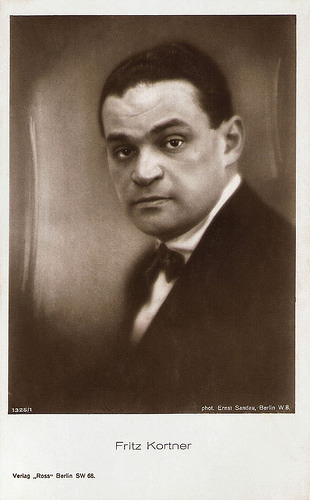
German postcard by Ross Verlag, no. 1325/1, 1927-1928. Photo: Ernst Sandau, Berlin.
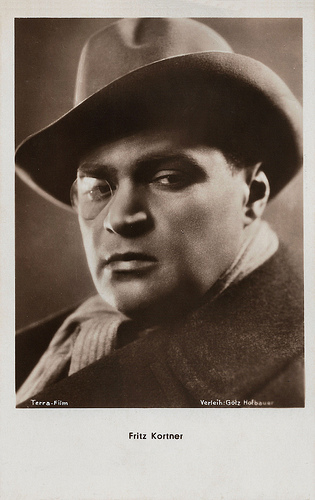
Austrian postcard by Iris Verlag, no. 6037. Photo: Terra Film / Götz Hofbauer.

German postcard by Margarinewerk Eidelstedt Gebr. Fauser G.m.b.H., Holstein, Serie 1, no. Bild 68. Photo: Transocean.
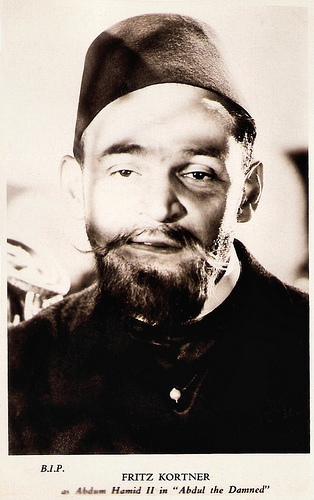
British card. Photo: B.I.P. Publicity still for Abdul the Damned (1935).
Sources: Wikipedia (English and German) and .

German collectors card by Ross Verlag in the series Vom Werden deutscher Filmkunst - Der Stumme Film, picture no. 102. Photo: Ufa. Publicity still for Hintertreppe/Backstairs (Leopold Jessner, Paul Leni, 1921) with Henny Porten and Wilhelm Dieterle .

German collectors card by Ross Verlag in the series Vom Werden deutscher Filmkunst - Der Stumme Film, picture no. 99, group 43. Photo: Ufa. Publicity still for Nora (Berthold Viertel, 1923) with Olga Tschechova .

German postcard by Ross Verlag, Berlin, no. 74/1, 1925-1935. Photo: Matador-Film. Publicity still for Das Leben des Beethoven/The Life of the Beethoven (Hans Otto, 1927).

German postcard by Ross Verlag, Berlin, no. 74/2, 1925-1935. Photo: Matador-Film. Publicity still for Das Leben des Beethoven/The Life of the Beethoven (Hans Otto, 1927). Collection: Didier Hanson.

Italian postcard, no. 341. Photo: Dist. S.A. Pittaluga. Francesca Bertini and Fritz Kortner in Mein Leben für das Deine/My life for yours (Luitz-Morat, 1928), an adaptation of the play Odette by Victorien Sardou.
Unfit for the Front
Fritz Kortner was born as Fritz Nathan Kohn in Vienna, Austria, in 1892.
He studied at the Vienna Academy of Music and Dramatic Art, an academy at the Burgtheater. After graduating, he received his first engagement at the National Theatre Mannheim. In 1911, he joined Max Reinhardt at the Deutsches Theater in Berlin. There he played only minor roles, and soon he moved again.
These were wander years for the actor, hopping from stage to stage. At the outbreak of the First World War, he was called up for military service. However, he was soon written off as unfit for the front.
In 1915 he made his first film appearances in a series of adventure films directed and produced by Harry Piel , including Manya, die Türkin/Manya, the Turkish Woman (Harry Piel, 1915). During the war he also appeared in such films as Der Märtyrer seines/The Martyr of his heart (Emil Justitz, 1918) as Ludwig von Beethoven, Der Sonnwendhof/The Sonnwendhof (Emil Leyde, 1918) and Frauenehre/Honour of a woman (Georg Kundert, 1918), in which his expressionistic acting style first came into its own.
On stage his roles became more important, and in 1919 he had his breakthrough with his performance in the play Die Wandlung (the conversion) by Ernst Toller at Die Tribüne in Berlin. Then director Leopold Jessner committed him for the Staatstheater and made him one of his principal actors. Kortner appeared in many plays by Schiller, Büchner and Shakespeare under the direction of Jessner.
His Shylock in The Merchant of Venice became his most famous role. It made him one of the great stars of the German stage in the 1920s, with a new form of theater: the expressionism. His specialty was playing sinister and threatening roles.
He also intensified his activities in the cinema, where he also excelled in expressionist works with his demonically subtle acting, such as in Satanas/Satan (F.W. Murnau, 1920) opposite Ernst Hoffmann , Die Nacht der Königin Isabeau/The Night of Queen Isabeau (Robert Wiene, 1920) starring Fern Andra , and the thriller Schatten/Warning Shadows (Arthur Robison, 1923) with Alexander Granach.
Another early classic was the drama Hintertreppe/Backstairs (Leopold Jessner, Paul Leni, 1921) in which he played a crippled mailman in love with a maid ( Henny Porten ) who lives in the same poor apartment building.
In 1924 Kortner married the actress Johanna Hofer, and they stayed together till his death. That year he played the role of the villain in the Austrian silent horror classic Orlacs Hände/Orlac’s hands (Robert Wiene, 1924) opposite Conrad Veidt .
He proved his versatility with completely different parts in two other classics, as Dr. Ludwig Schön in Die Büchse der Pandora/Pandora’s Box (Georg Wilhelm Pabst, 1929) featuring Louise Brooks , and the title role in the early sound film Dreyfus/The Dreyfus Case (Richard Oswald, 1930) with Heinrich George .

Postcard by Ross Verlag. Photo: Sandau. Collection: Performing Arts@Flickr.

Postcard by Ross Verlag. Photo: Bieber. Collection: Performing Arts@Flickr.

Postcard. Collection: Performing Arts@Flickr.
The Attack
During the turbulent times in the early 1930s, the Jewish Fritz Kortner decided to install his residence in Ascona. In late 1932 he was attacked in the Nazi propaganda sheet Der Angriff (The Attack): "One had chosen for the role in Gott, Kaiser und Bauer (1932, God, Emperor and Farmer) the Jew Kortner-Kohn, who actually should have stopped playing in the Berlin theatre scene long ago. He is pretty much the worst and grubbiest type who has ever been on a German stage.”
When Adolf Hitler came to power in 1933, Kortner, was on a tour through Scandinavia and Eastern Europe. He decided not to return to Germany. Over Czechoslovakia, then to Vienna - where he performed at Max Reinhardt’s Theater in der Josefstadt – to Paris, the Kortner family then emigrated to Great Britain, where Fritz Kortner could appear in films again.
Among his British films are Chu Chin Chow (Walter Forde, 1934) with Anna May Wong , and Abdul the Damned (Karl Grune, 1935) with Nils Asther .
In 1937, he emigrated to the United States, where he found work as a character actor and theatre director. In 1938 followed his family, and they moved on to Hollywood. Here he worked on scripts. Until his return to Europe in 1947 he starred in nine films such as The Hitler Gang (John Farrow, 1944). However, they were not very convincing artistically.
After his return to Germany, he became noted for his innovative staging and direction. His artistic homes were the Münchener Kammerspiele under Hans Schweikart and the Schillertheater in Berlin under Boleslaw Barlog. A classic became his direction of Richard III (1964) in which the king crawls over piles of corpses at the end. At the Kammerspiele, he directed seventeen plays until 1967.
He also appeared in some interesting films, such as Der Ruf/The Last Illusion (Josef von Báky, 1949) with Johanna Hofer, and the suspenseful drama-thriller Epilog: Das Geheimnis der Orplid/Epilogue (Helmut Käutner, 1950). In the 1960s, Kortner started to direct at the Burgtheater in his native Vienna. He directed his last play, Emilia Galotti with Klaus Maria Brandauer, in April 1970, at the Viennese Theater in der Josefstadt.
Three months later, Fritz Kortner died of cancer in Munich, aged 78. Kortner’s style of interpretation and rehearsal influenced a new generation of directors. Particularly noteworthy are Peter Stein and Jürgen Flimm, who both have been assistant directors of Kortner.

German postcard by Ross Verlag, no. 1325/1, 1927-1928. Photo: Ernst Sandau, Berlin.

Austrian postcard by Iris Verlag, no. 6037. Photo: Terra Film / Götz Hofbauer.

German postcard by Margarinewerk Eidelstedt Gebr. Fauser G.m.b.H., Holstein, Serie 1, no. Bild 68. Photo: Transocean.

British card. Photo: B.I.P. Publicity still for Abdul the Damned (1935).
Sources: Wikipedia (English and German) and .
Published on February 15, 2018 22:00
February 14, 2018
Maciste nella gabbia dei leoni (1926)
Maciste nella gabbia dei leoni/Maciste in the Lion's Cage is a 1926 Italian silent adventure film directed by Guido Brignone for the Cinès-Pittaluga studio. It was part of the popular Maciste series of films starring Bartolomeo Pagano as the strongman Maciste. His co-stars were Elena Sangro, Luigi Serventi, Mimi Dovia and Alberto Collo. In the script, written by Brignone, Maciste is sent to Africa by a circus showman to capture some lions. Maciste nella gabbia dei leoni was the penultimate film of the silent series, followed by Il gigante delle Dolomiti/The Giant of the Dolomites (Guido Brignone, 1927).
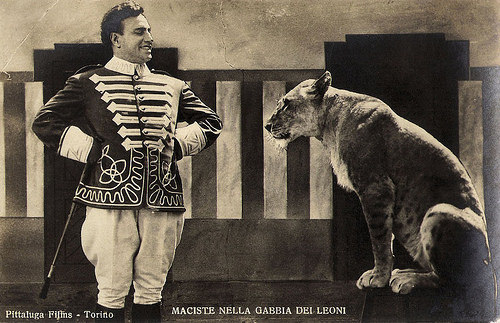
Bartolomeo Pagano . Italian postcard by Ed. A. Traldi, Milano. Photo: Pittaluga Films, Torino. Publicity still for Maciste nella gabbia dei leoni/Maciste in the Lions' Cage (Guido Brignone, 1926).
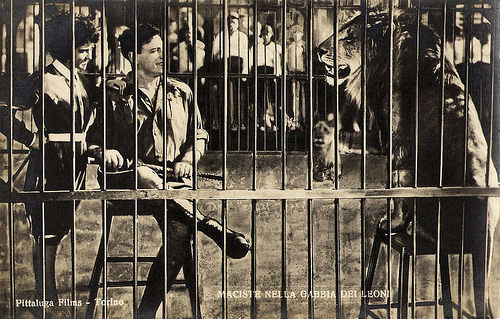
Mimi Dovia and Bartolomeo Pagano . Italian postcard by Ed. A. Traldi, Milano. Photo: Pittaluga Films, Torino. Publicity still for Maciste nella gabbia dei leoni/Maciste in the Lions' Cage (Guido Brignone, 1926).
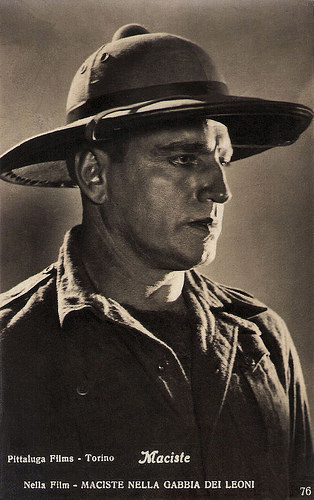
Bartolomeo Pagano . Italian postcard by Ed. A. Traldi, Milano. Photo: Pittaluga Films, Torino. Publicity still for Maciste nella gabbia dei leoni/Maciste in the Lions' Cage (Guido Brignone, 1926).

Bartolomeo Pagano . Italian postcard by Ed. Vettori, Bologna, no. 3620. Photo: Pittaluga Films, Torino. Publicity still for Maciste nella gabbia dei leoni/Maciste in the Lions' Cage (Guido Brignone, 1926).
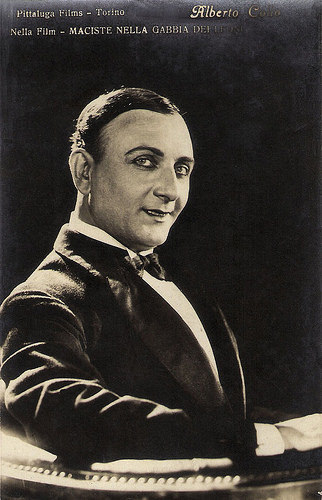
Alberto Collo . Italian postcard by Ed. A. Traldi, Milano. Photo: Pittaluga Films, Torino. Publicity still for Maciste nella gabbia dei leoni/Maciste in the Lions' Cage (Guido Brignone, 1926).
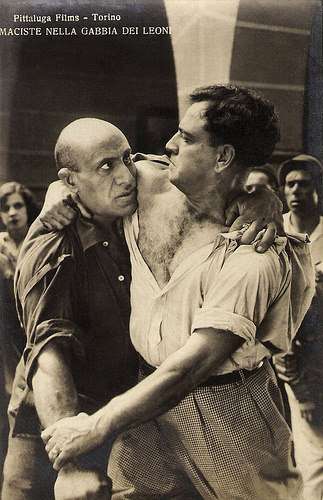
Bartolomeo Pagano (right). Italian postcard by Ed. A. Traldi, Milano. Photo: Pittaluga Films, Torino. Publicity still for Maciste nella gabbia dei leoni/Maciste in the Lions' Cage (Guido Brignone, 1926).
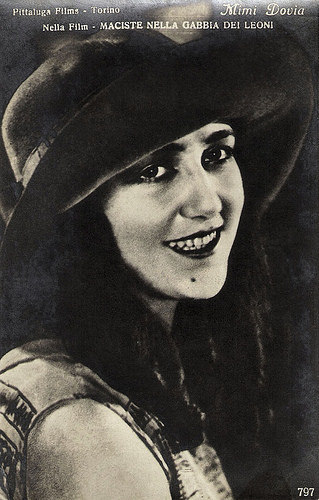
Mimi Dovia. Italian postcard by Ed. A. Traldi, Milano. Photo: Pittaluga Films, Torino. Publicity still for Maciste nella gabbia dei leoni/Maciste in the Lions' Cage (Guido Brignone, 1926).
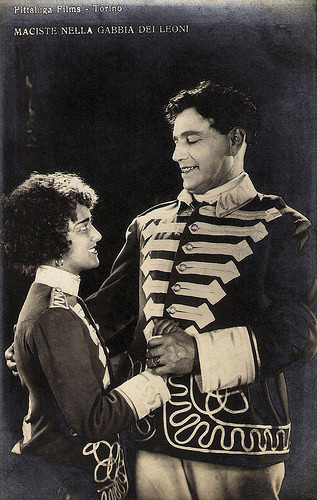
Mimi Dovia and Bartolomeo Pagano . Italian postcard by Ed. A. Traldi, Milano. Photo: Pittaluga Films, Torino. Publicity still for Maciste nella gabbia dei leoni/Maciste in the Lions' Cage (Guido Brignone, 1926).
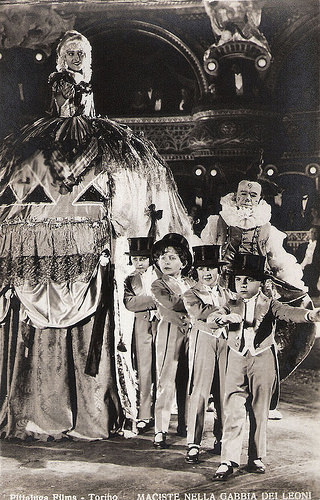
Mimi Dovia. Italian postcard by Ed. A. Traldi, Milano. Photo: Pittaluga Films, Torino. Publicity still for Maciste nella gabbia dei leoni/Maciste in the Lions' Cage (Guido Brignone, 1926).
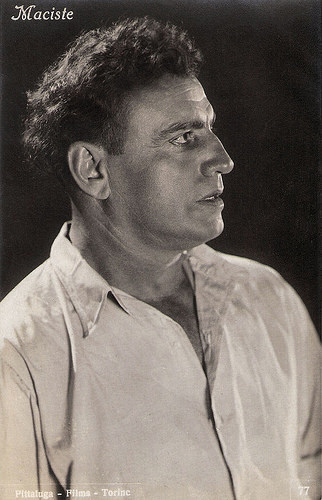
Bartolomeo Pagano . Italian postcard by Ed. A. Traldi, Milano. Photo: Pittaluga Films, Torino. Publicity still for Maciste nella gabbia dei leoni/Maciste in the Lions' Cage (Guido Brignone, 1926).
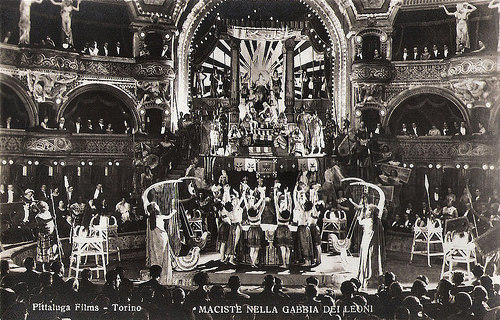
Italian postcard by Ed. A. Traldi, Milano. Photo: Pittaluga Films, Torino. Publicity still for Maciste nella gabbia dei leoni/Maciste in the Lions' Cage (Guido Brignone, 1926).
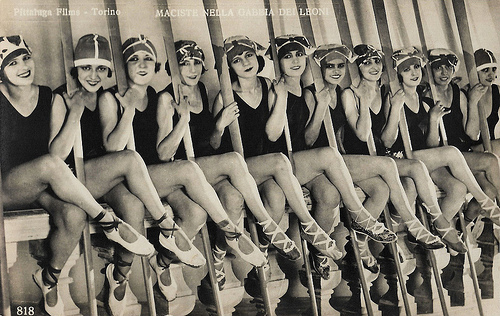
Italian postcard by Ed. A. Traldi, Milano, no. 818. Photo: Pittaluga Films, Torino. Publicity still for Maciste nella gabbia dei leoni/Maciste in the Lions' Cage (Guido Brignone, 1926).
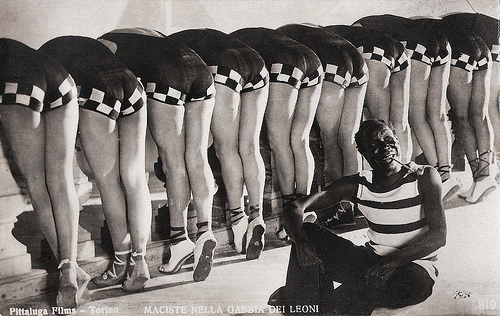
Italian postcard by Ed. A. Traldi, Milano. Photo: Pittaluga Films, Torino. Publicity still for Maciste nella gabbia dei leoni/Maciste in the Lions' Cage (Guido Brignone, 1926).
Sources: Wikipedia and IMDb.

Bartolomeo Pagano . Italian postcard by Ed. A. Traldi, Milano. Photo: Pittaluga Films, Torino. Publicity still for Maciste nella gabbia dei leoni/Maciste in the Lions' Cage (Guido Brignone, 1926).

Mimi Dovia and Bartolomeo Pagano . Italian postcard by Ed. A. Traldi, Milano. Photo: Pittaluga Films, Torino. Publicity still for Maciste nella gabbia dei leoni/Maciste in the Lions' Cage (Guido Brignone, 1926).

Bartolomeo Pagano . Italian postcard by Ed. A. Traldi, Milano. Photo: Pittaluga Films, Torino. Publicity still for Maciste nella gabbia dei leoni/Maciste in the Lions' Cage (Guido Brignone, 1926).

Bartolomeo Pagano . Italian postcard by Ed. Vettori, Bologna, no. 3620. Photo: Pittaluga Films, Torino. Publicity still for Maciste nella gabbia dei leoni/Maciste in the Lions' Cage (Guido Brignone, 1926).

Alberto Collo . Italian postcard by Ed. A. Traldi, Milano. Photo: Pittaluga Films, Torino. Publicity still for Maciste nella gabbia dei leoni/Maciste in the Lions' Cage (Guido Brignone, 1926).

Bartolomeo Pagano (right). Italian postcard by Ed. A. Traldi, Milano. Photo: Pittaluga Films, Torino. Publicity still for Maciste nella gabbia dei leoni/Maciste in the Lions' Cage (Guido Brignone, 1926).

Mimi Dovia. Italian postcard by Ed. A. Traldi, Milano. Photo: Pittaluga Films, Torino. Publicity still for Maciste nella gabbia dei leoni/Maciste in the Lions' Cage (Guido Brignone, 1926).

Mimi Dovia and Bartolomeo Pagano . Italian postcard by Ed. A. Traldi, Milano. Photo: Pittaluga Films, Torino. Publicity still for Maciste nella gabbia dei leoni/Maciste in the Lions' Cage (Guido Brignone, 1926).

Mimi Dovia. Italian postcard by Ed. A. Traldi, Milano. Photo: Pittaluga Films, Torino. Publicity still for Maciste nella gabbia dei leoni/Maciste in the Lions' Cage (Guido Brignone, 1926).

Bartolomeo Pagano . Italian postcard by Ed. A. Traldi, Milano. Photo: Pittaluga Films, Torino. Publicity still for Maciste nella gabbia dei leoni/Maciste in the Lions' Cage (Guido Brignone, 1926).

Italian postcard by Ed. A. Traldi, Milano. Photo: Pittaluga Films, Torino. Publicity still for Maciste nella gabbia dei leoni/Maciste in the Lions' Cage (Guido Brignone, 1926).

Italian postcard by Ed. A. Traldi, Milano, no. 818. Photo: Pittaluga Films, Torino. Publicity still for Maciste nella gabbia dei leoni/Maciste in the Lions' Cage (Guido Brignone, 1926).

Italian postcard by Ed. A. Traldi, Milano. Photo: Pittaluga Films, Torino. Publicity still for Maciste nella gabbia dei leoni/Maciste in the Lions' Cage (Guido Brignone, 1926).
Sources: Wikipedia and IMDb.
Published on February 14, 2018 22:00
Paul van Yperen's Blog
- Paul van Yperen's profile
- 13 followers
Paul van Yperen isn't a Goodreads Author
(yet),
but they
do have a blog,
so here are some recent posts imported from
their feed.



